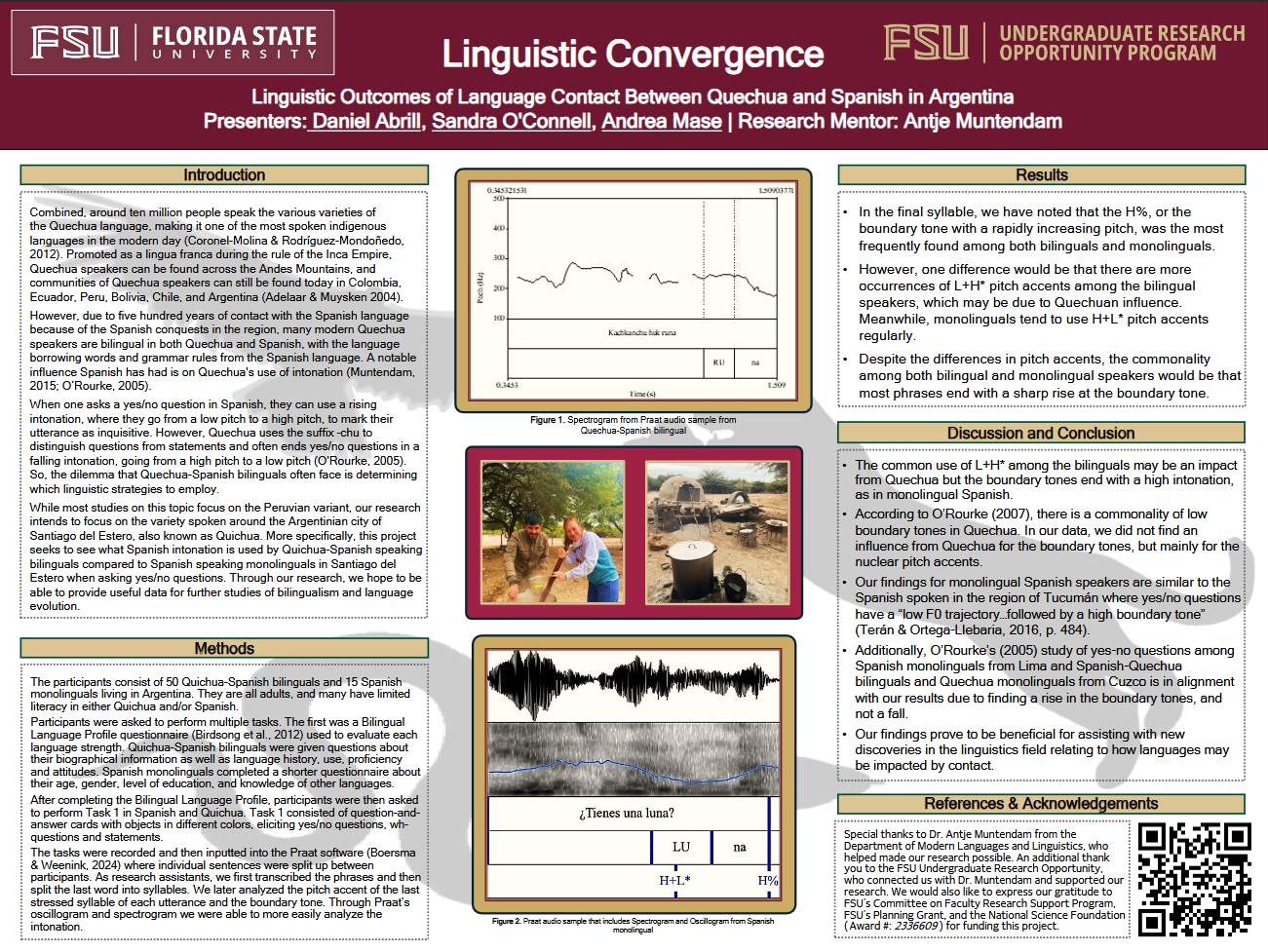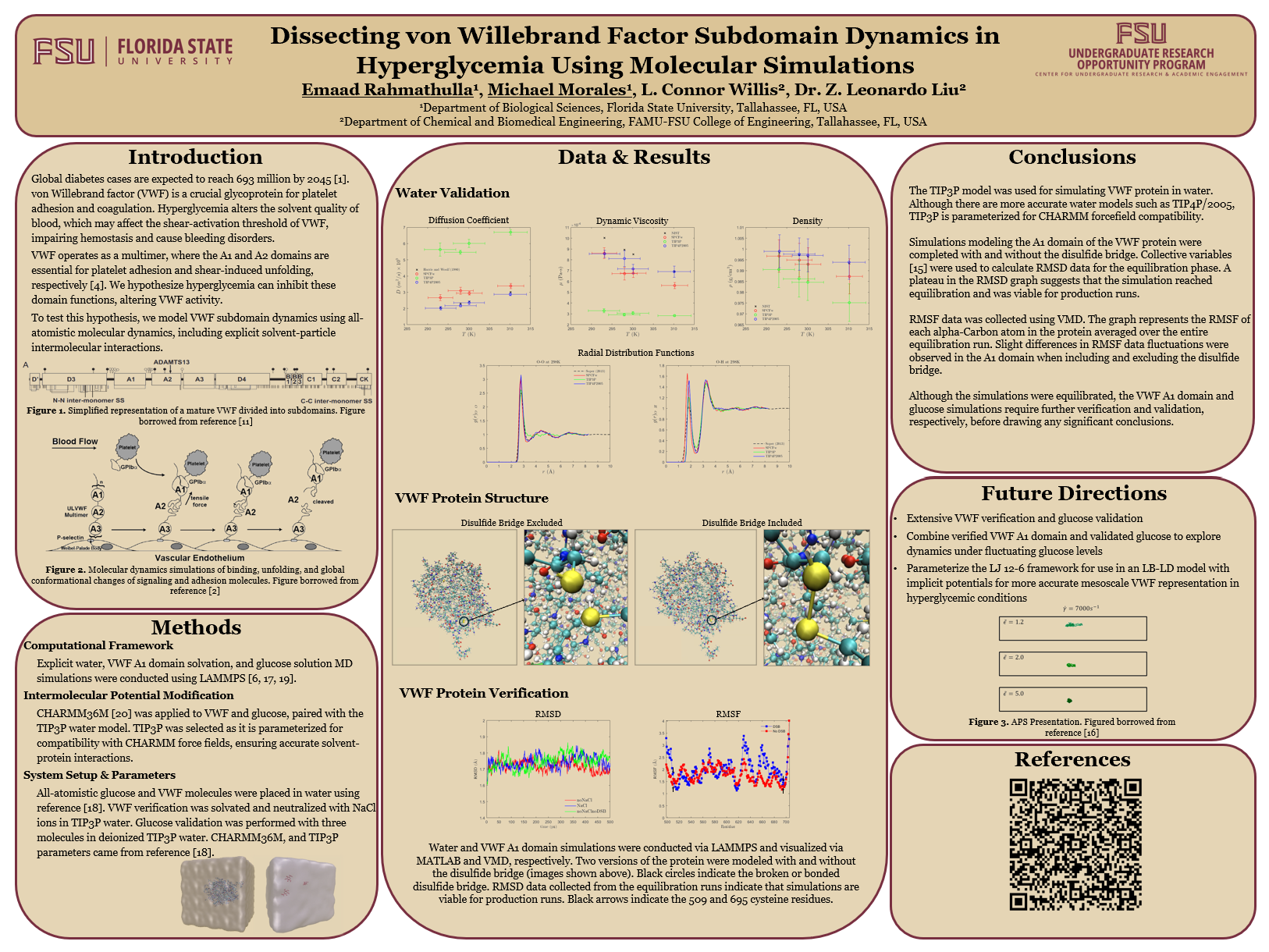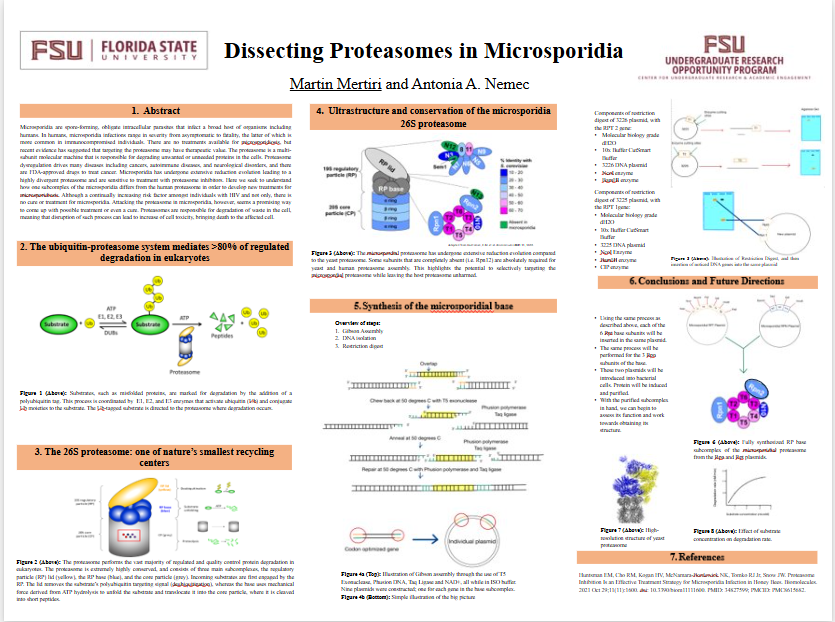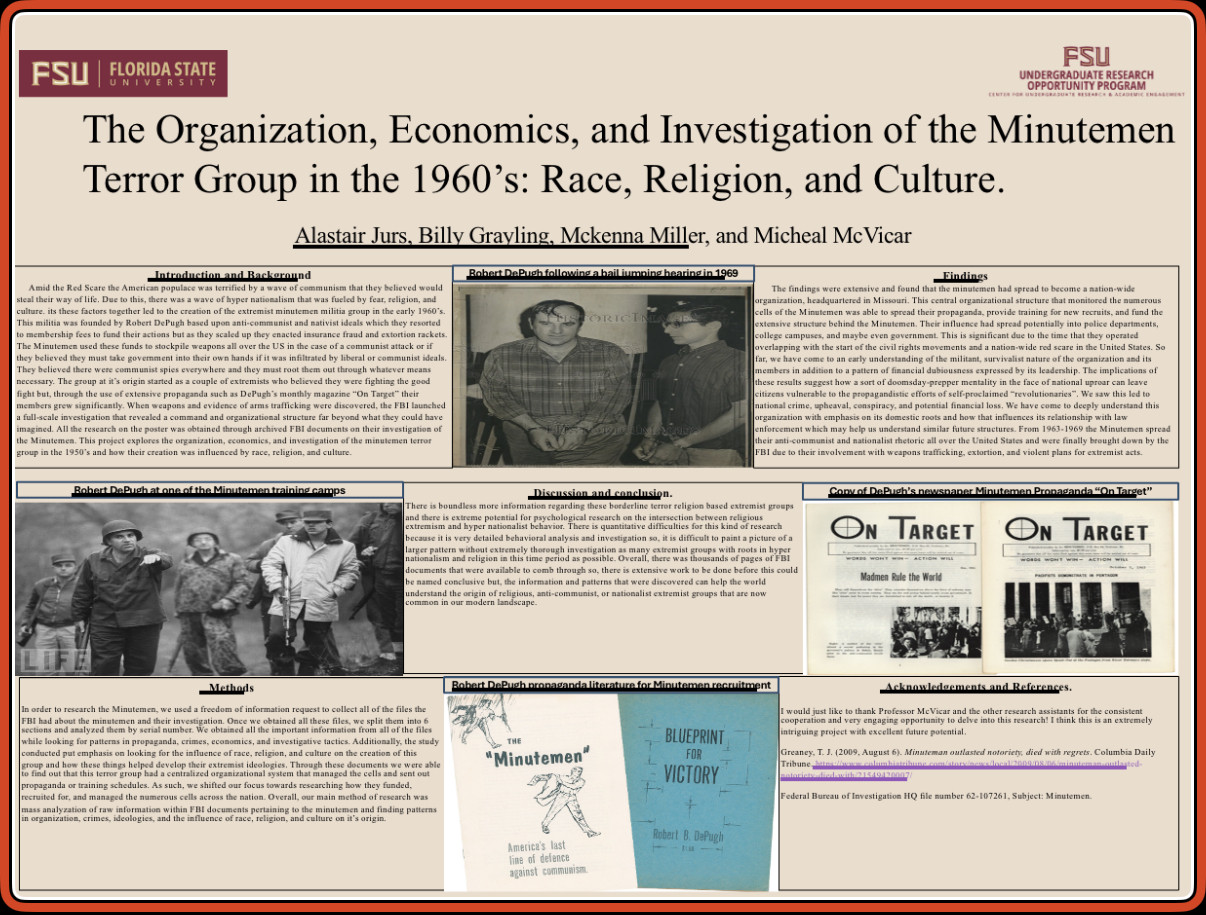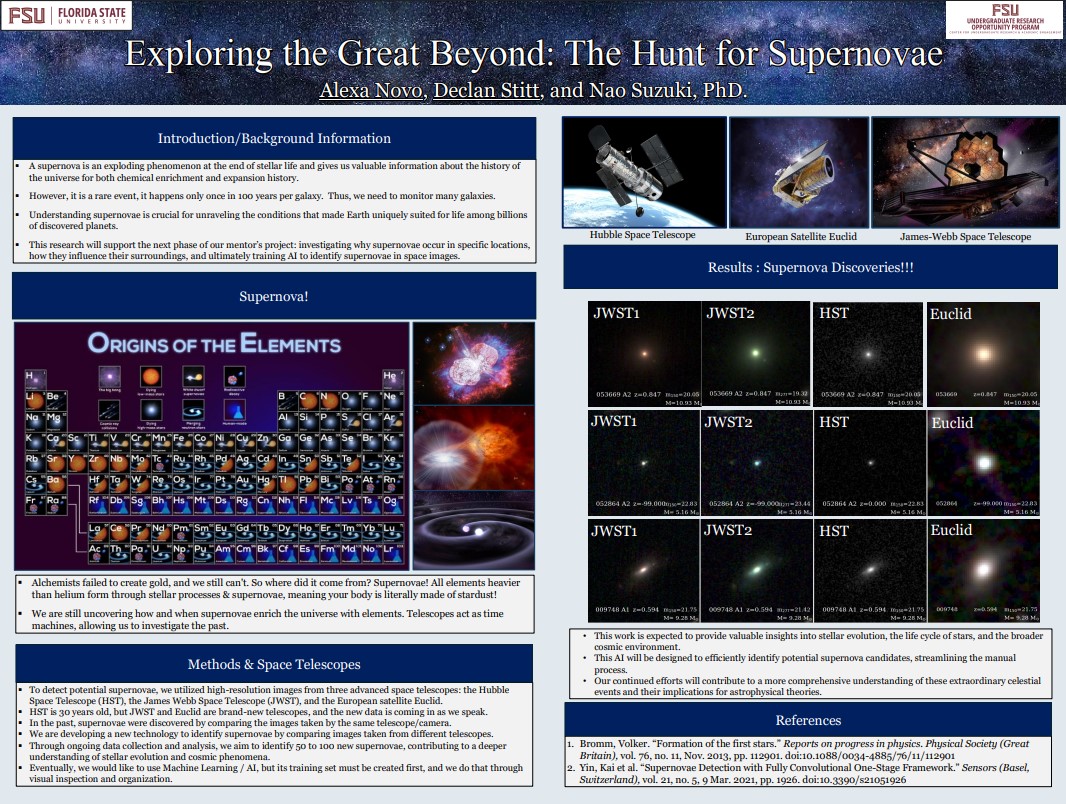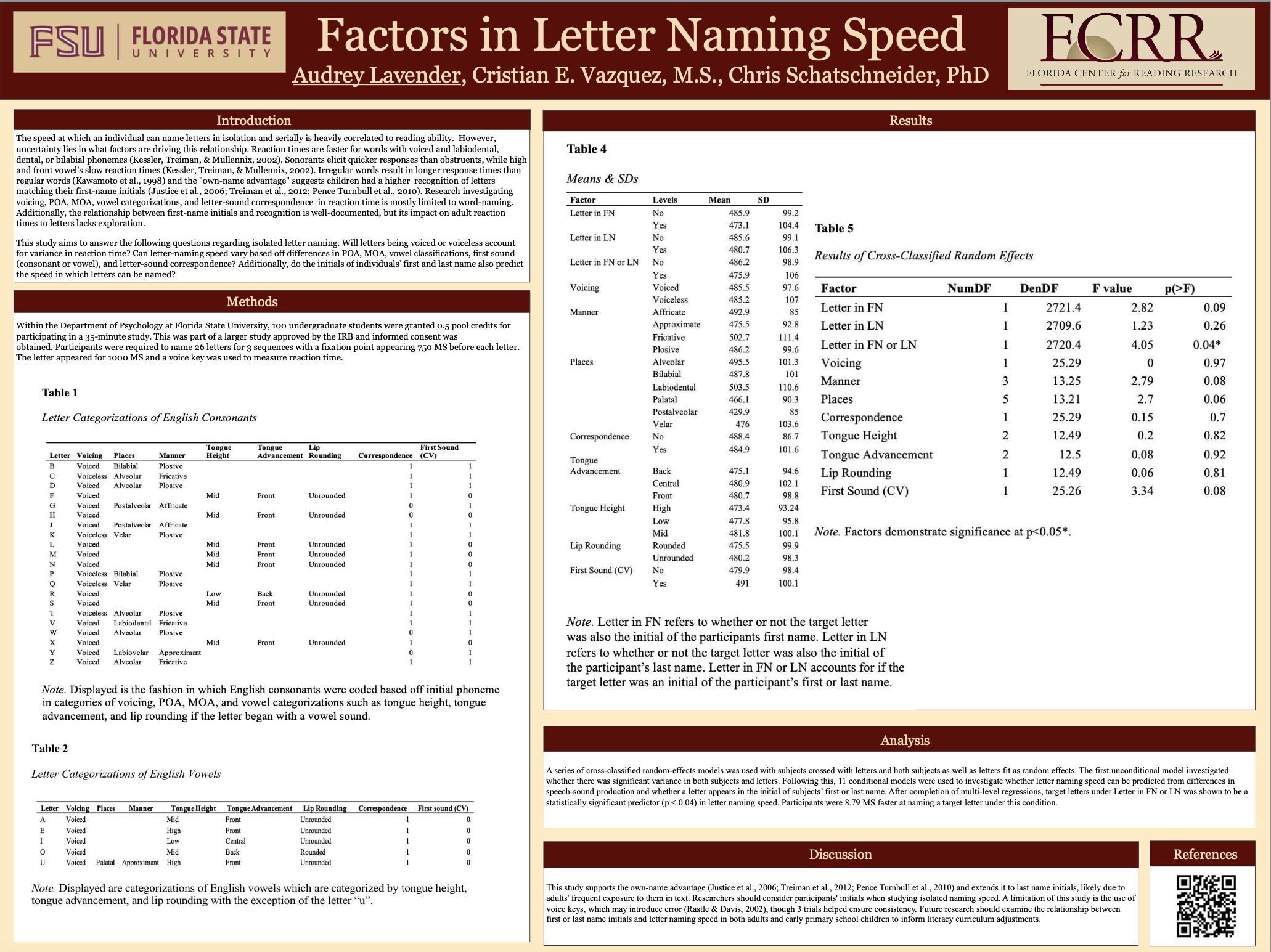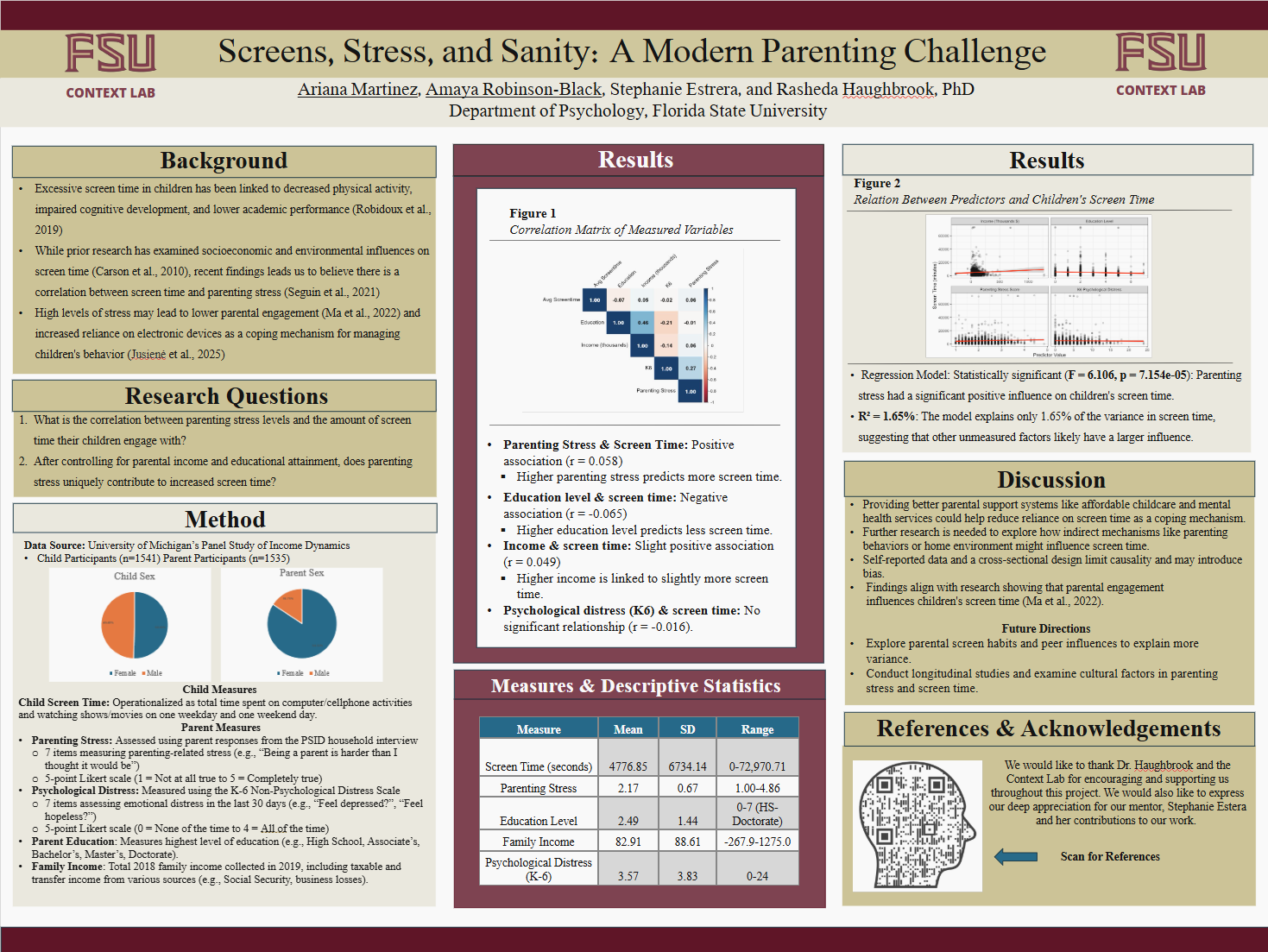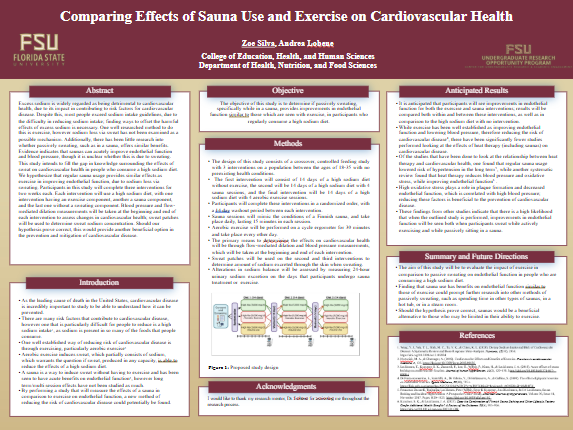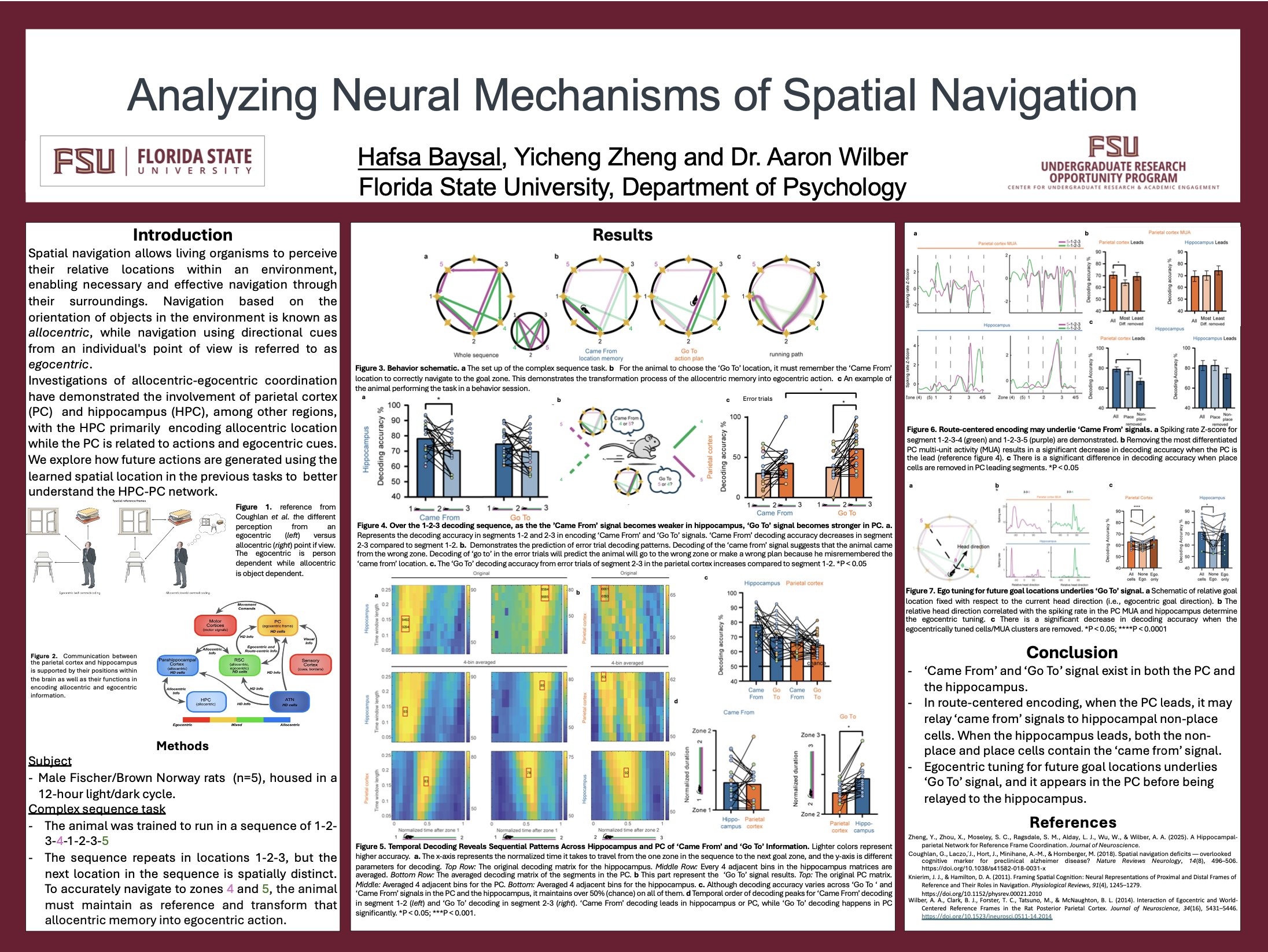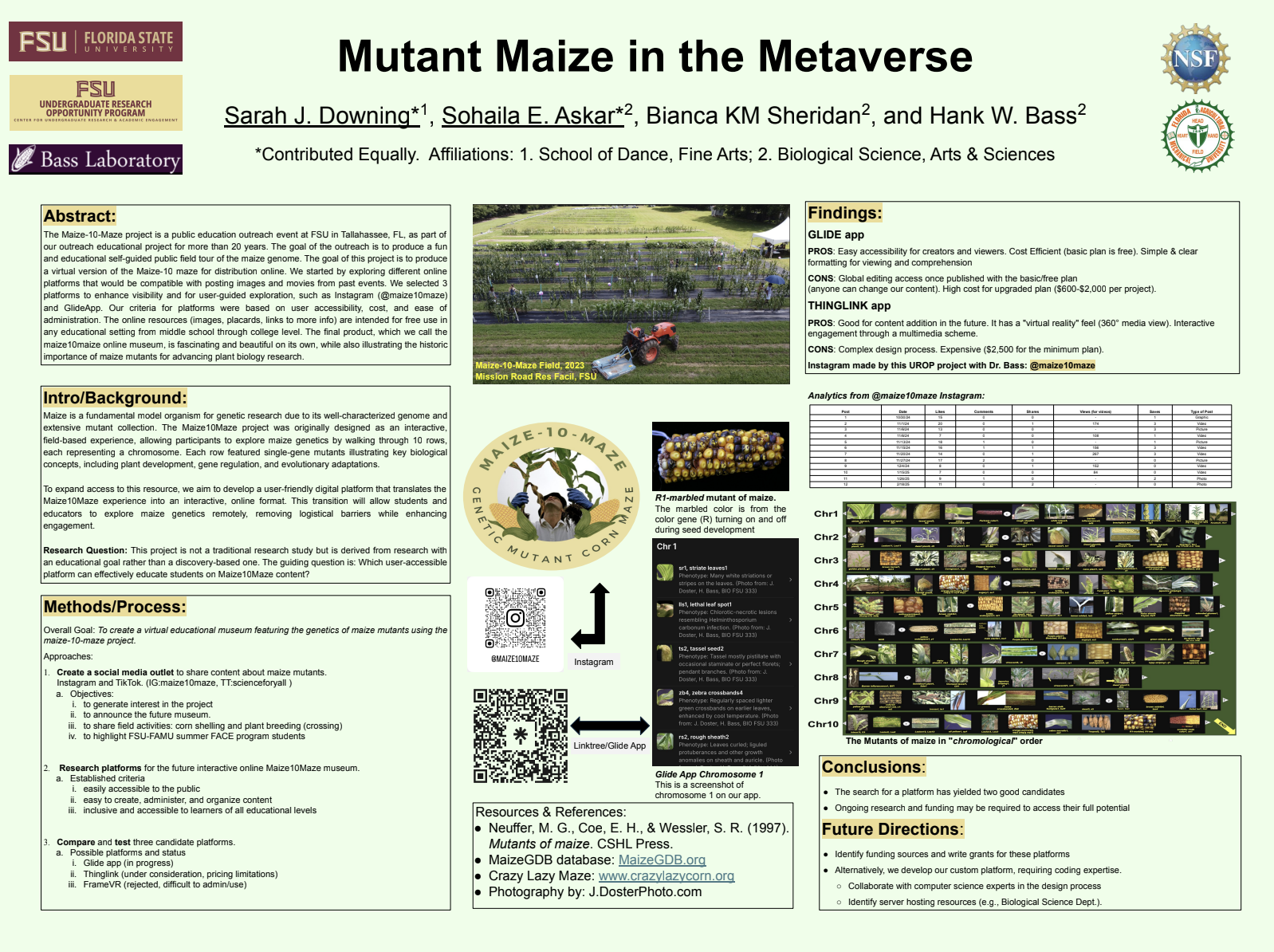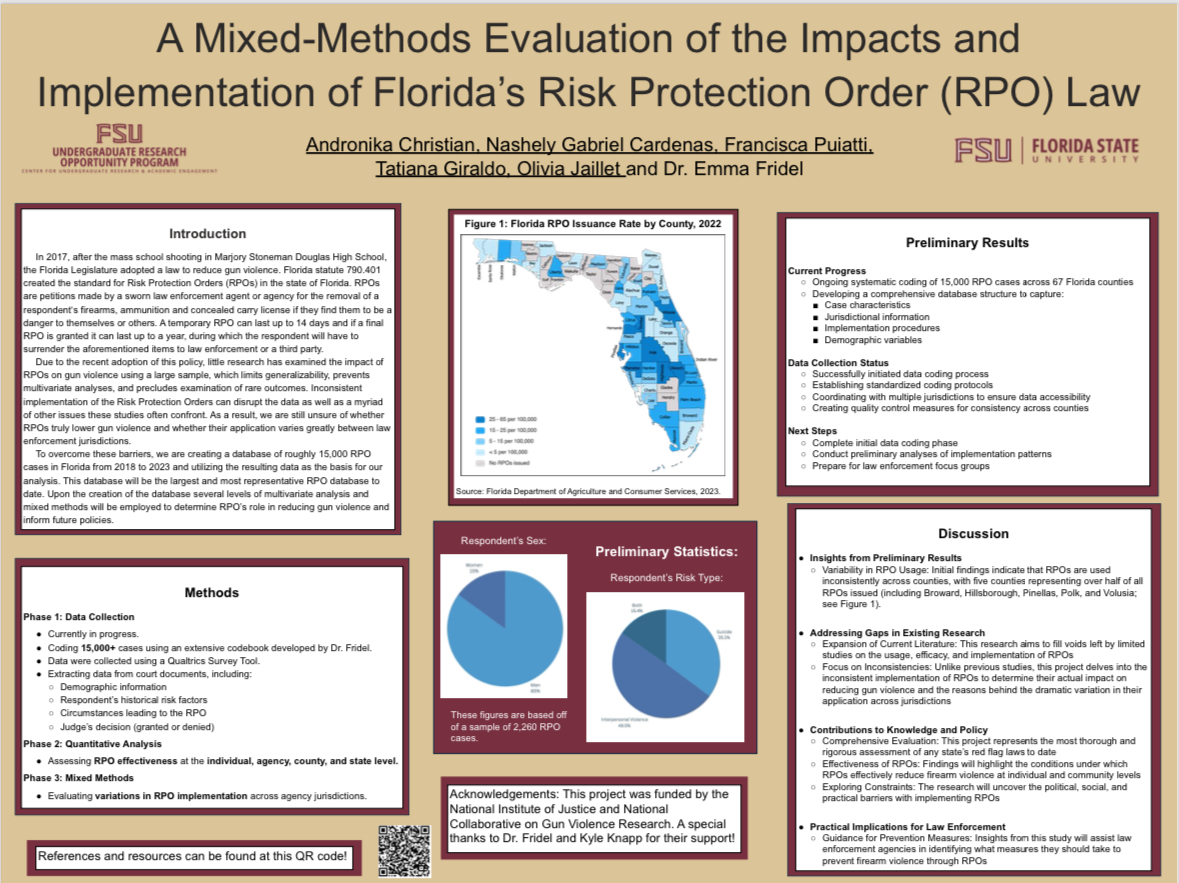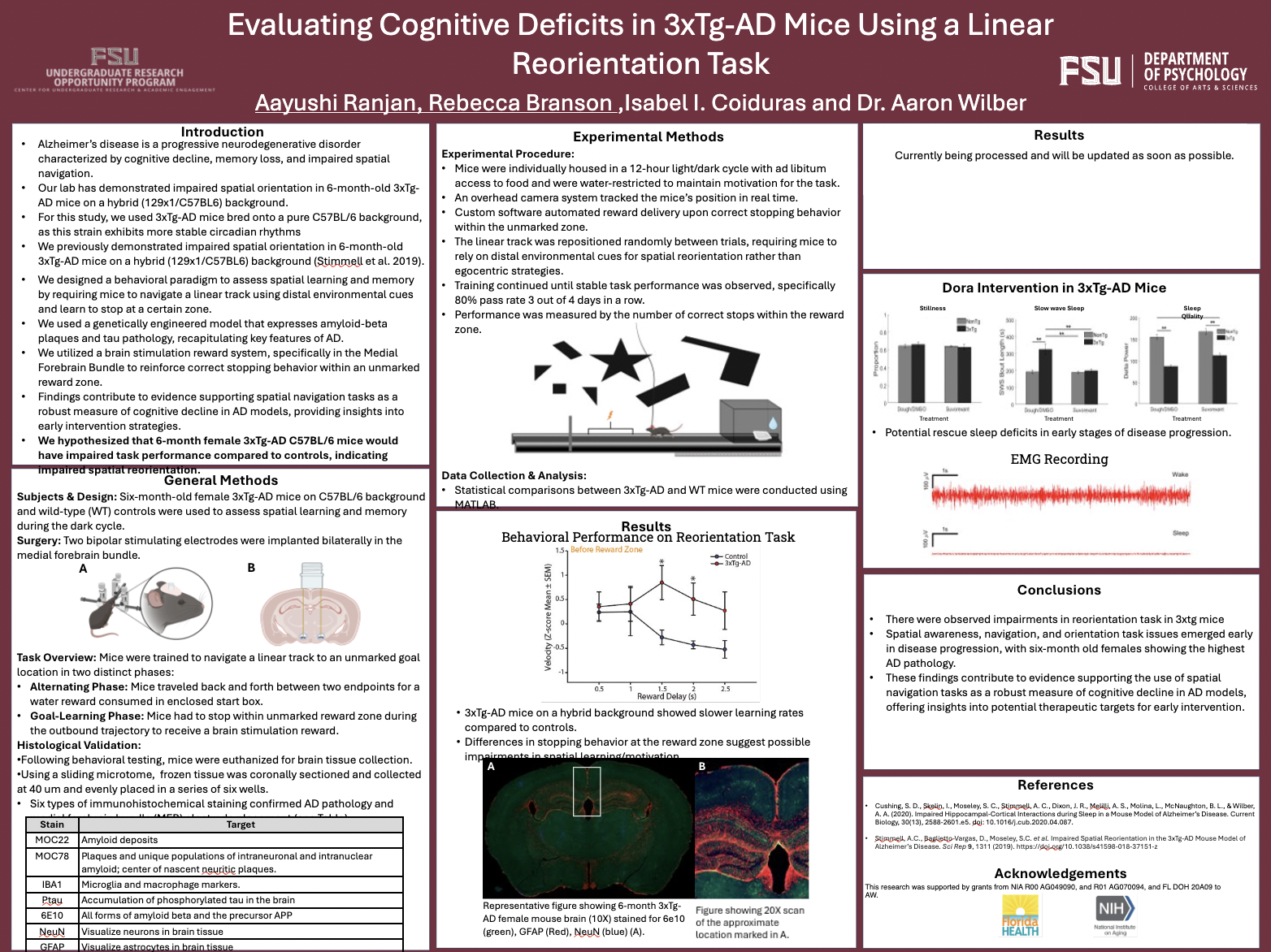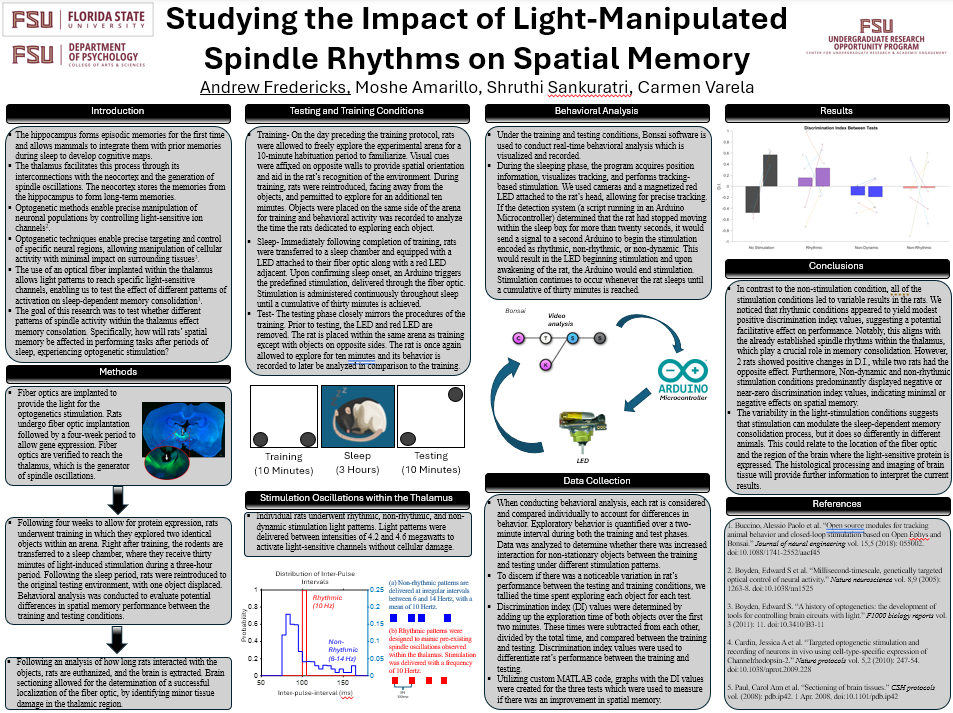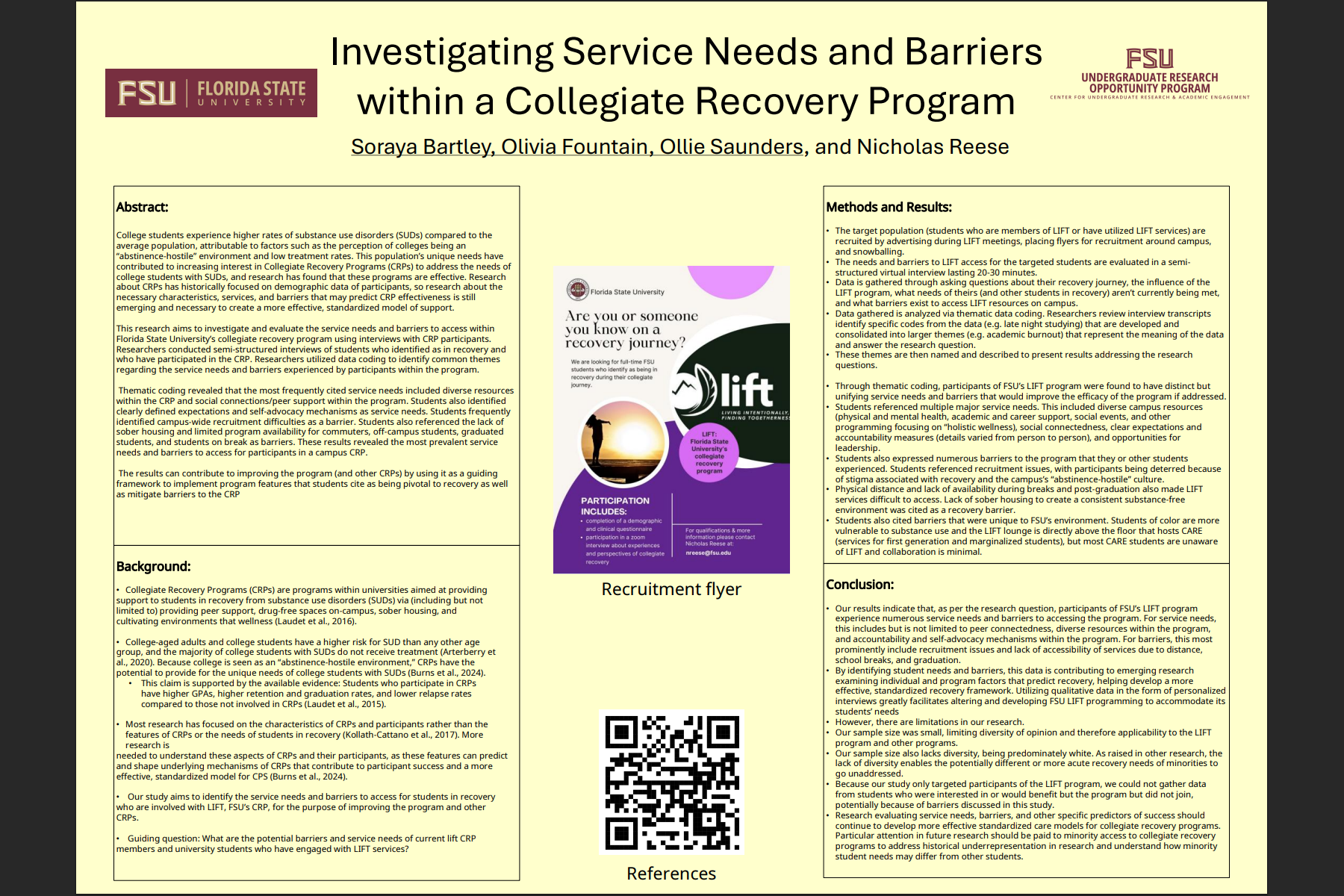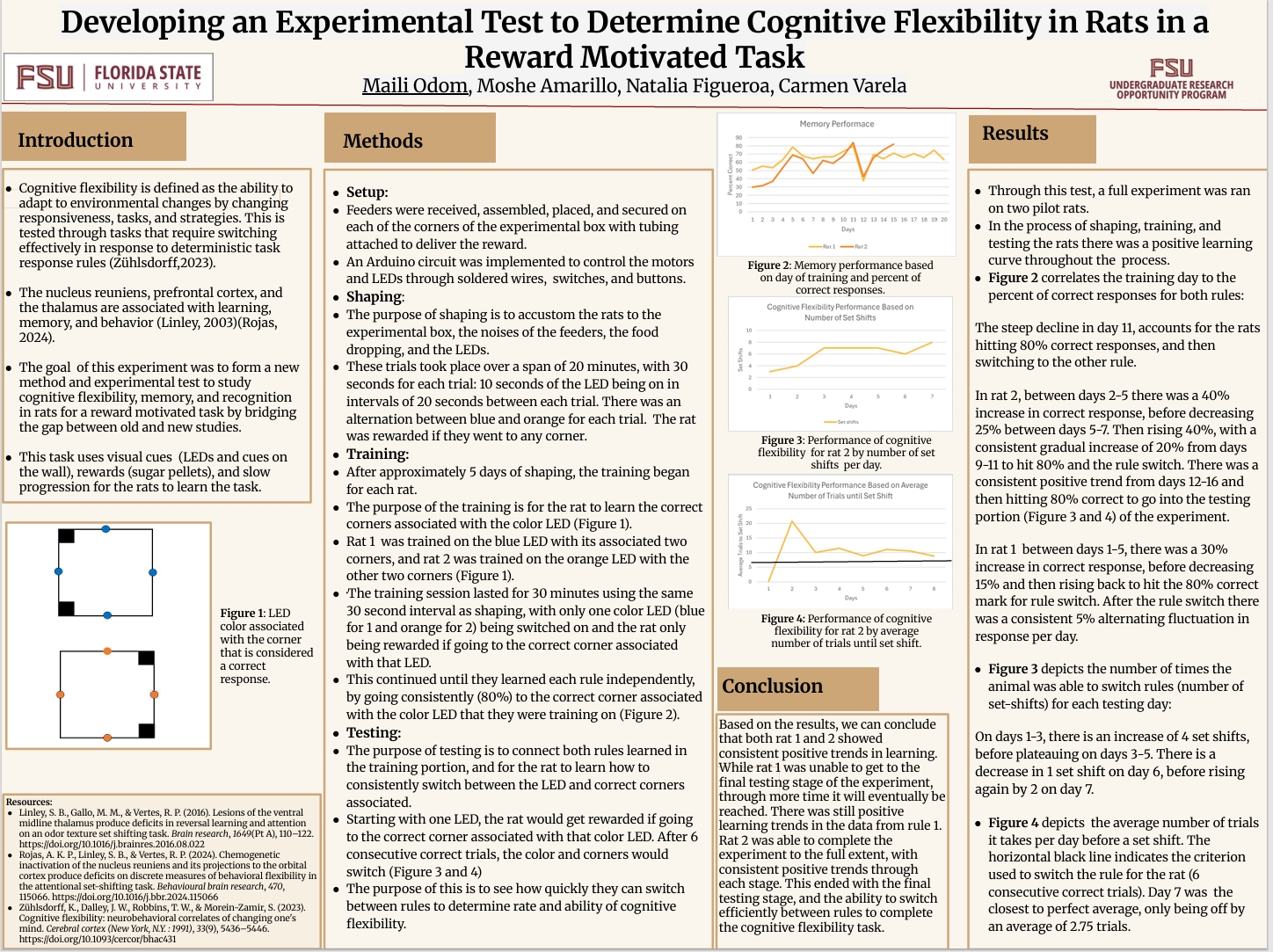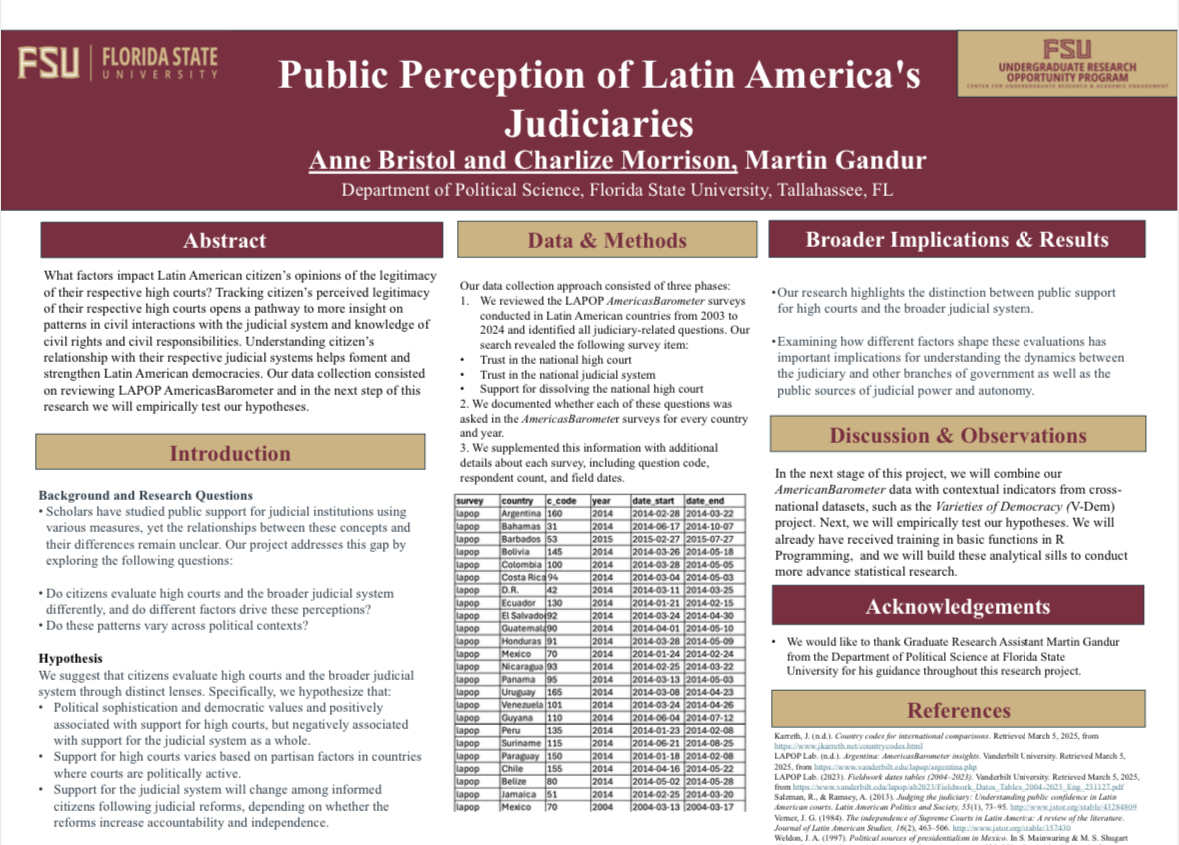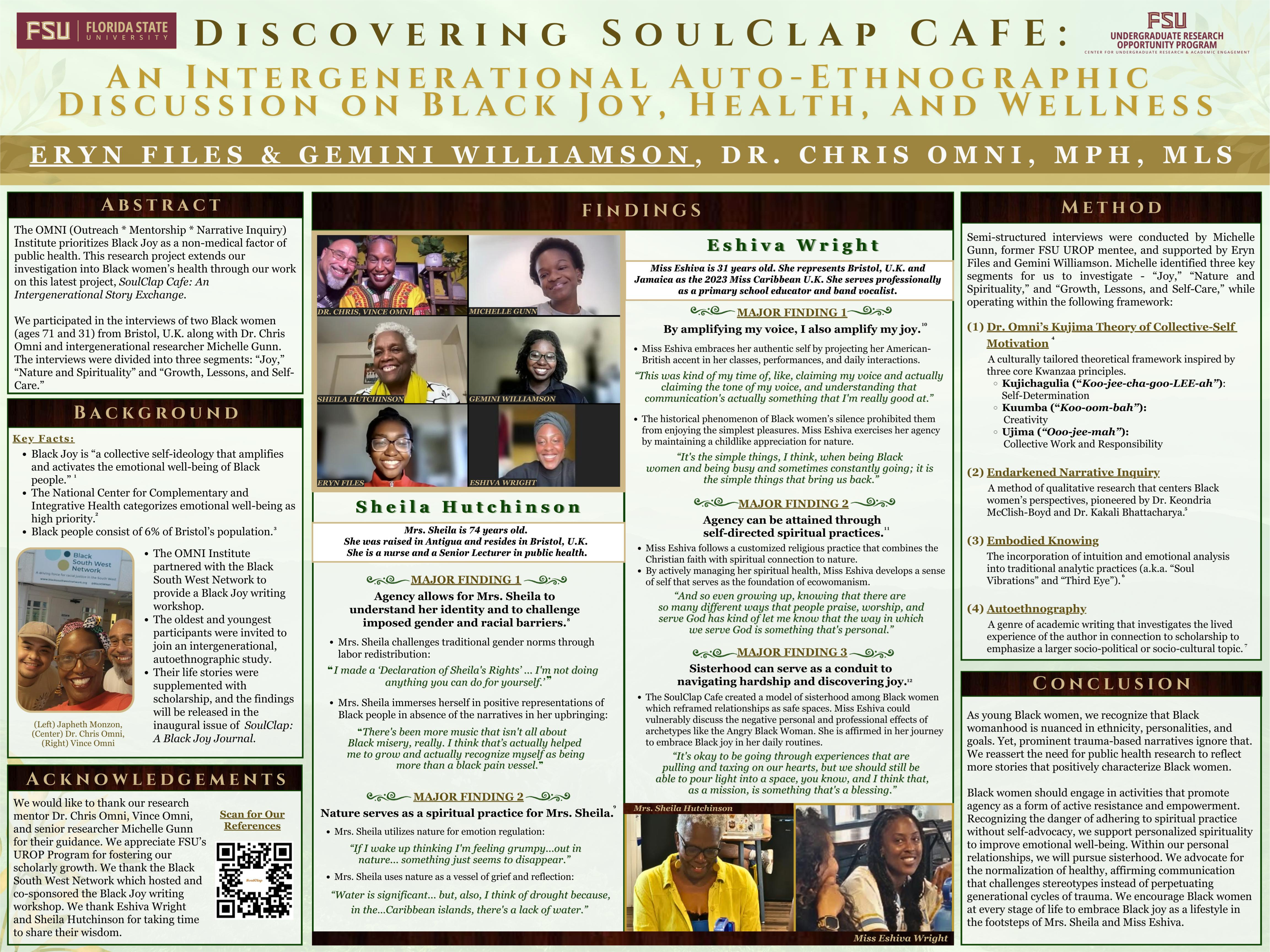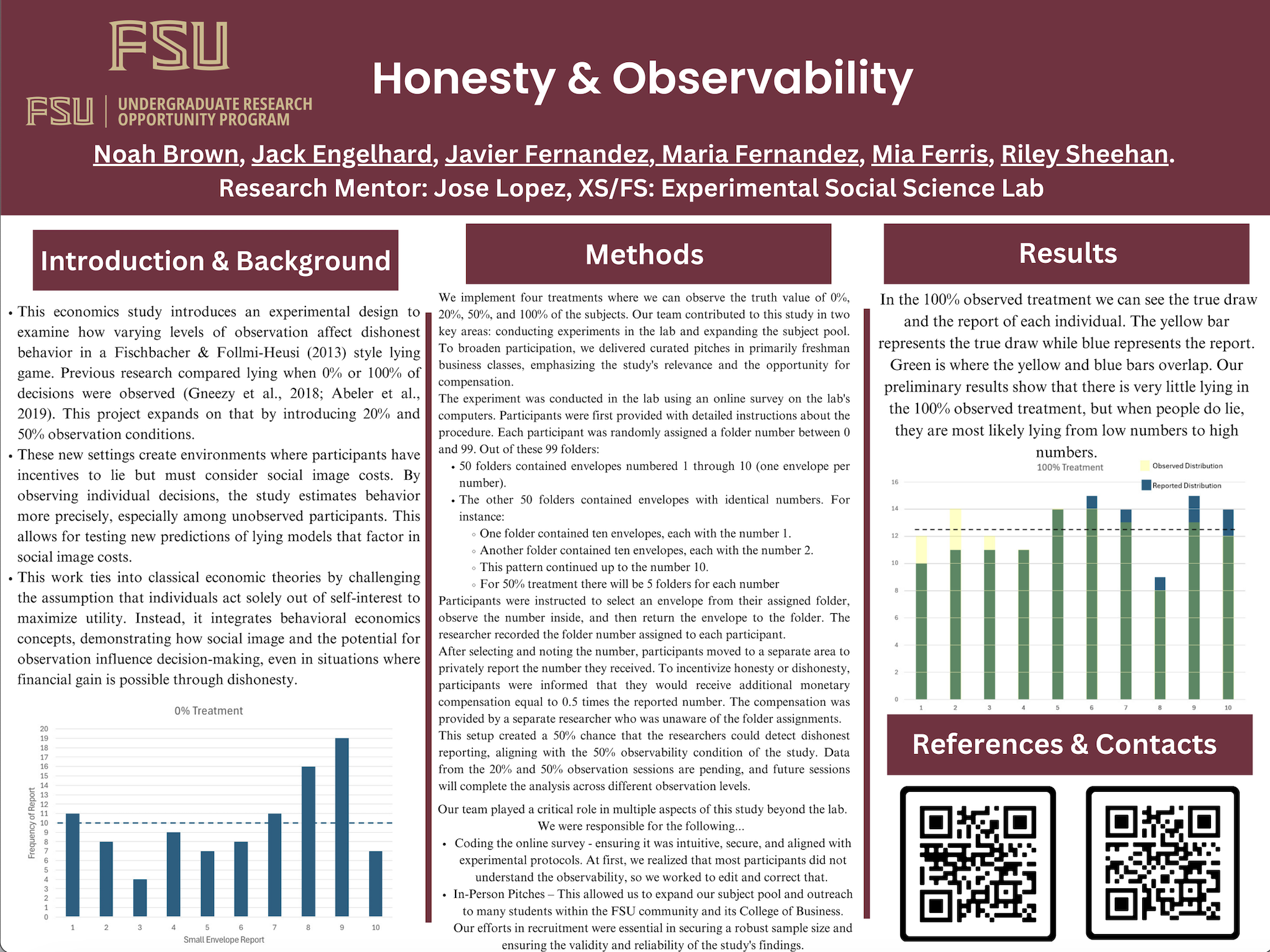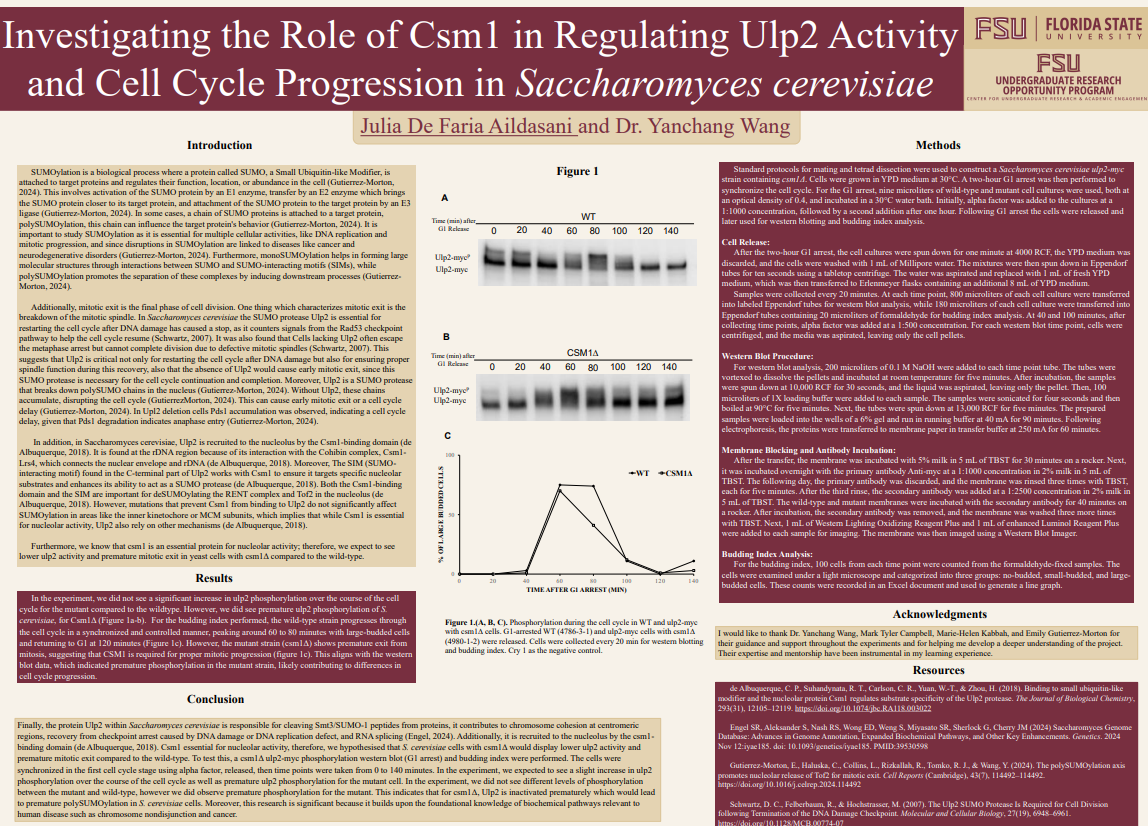Research Symposium
25th annual Undergraduate Research Symposium, April 1, 2025
Daniel Abrill Poster Session 1: 9:30 am - 10:30 am / Poster #259
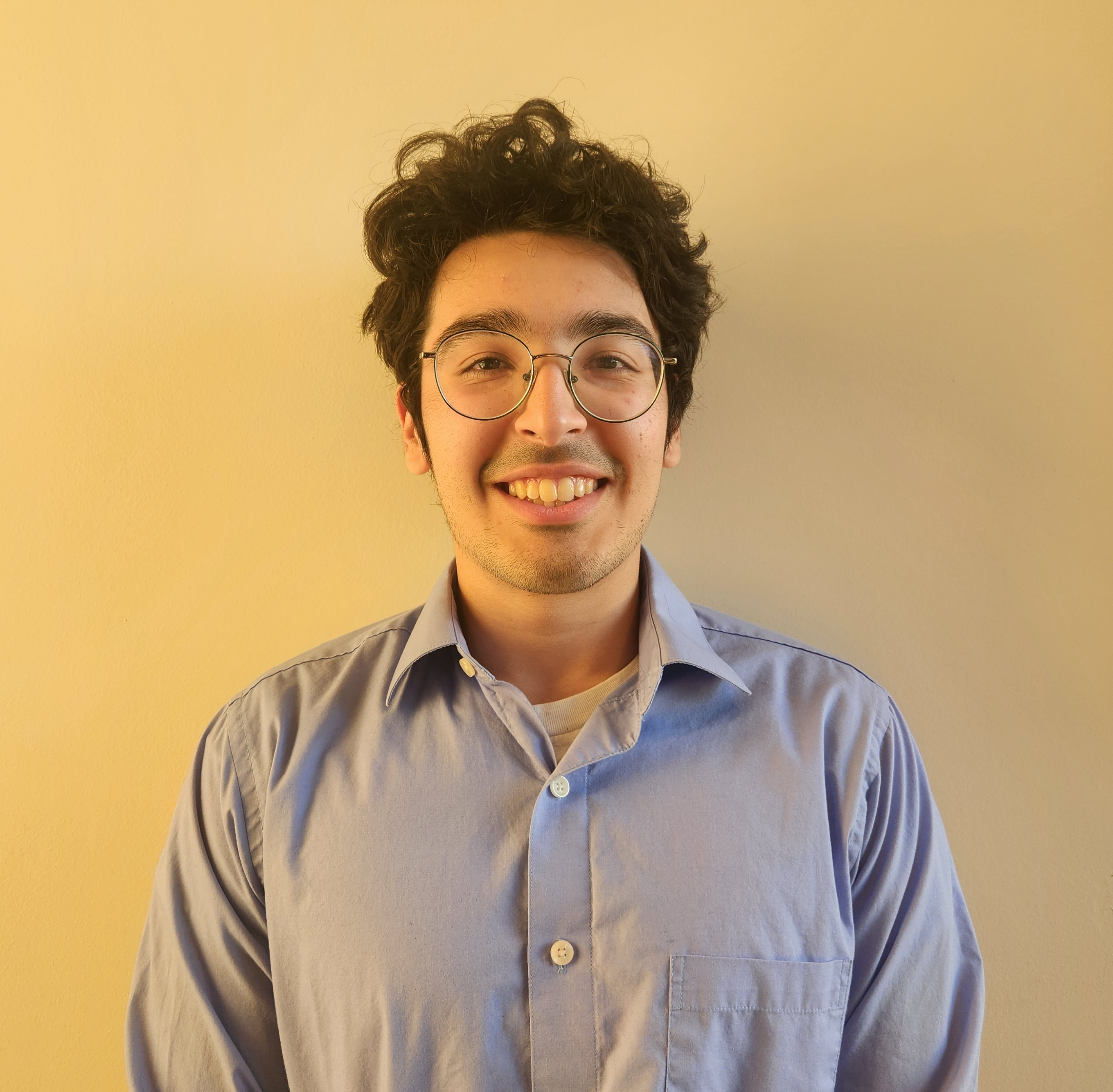
BIO
Daniel Abrill is a First-Year International Affairs student from Orlando, Florida, with an interest in linguistics, history, culture, and politics. He received his Associates of Arts degree from Seminole State College prior to enrolling in FSU and intends to dual major in Political Science and International Affairs.
Linguistic Convergence: Linguistic Outcomes of Language Contact between Spanish and Argentina
Authors: Daniel Abrill, Antje MuntendamStudent Major: International Affairs
Mentor: Antje Muntendam
Mentor's Department: Department of Modern Languages and Linguistics Mentor's College: College of Arts and Sciences Co-Presenters:
Abstract
This project intends to study the linguistic outcome of language contact between Quechua and Spanish in Argentina. When Spanish speakers ask yes-no questions, they use a rising intonation, while Quechua uses a falling intonation and the marker -chu. However, due to centuries of intense contact between the two languages, bilingual Quechua-Spanish speakers may be accustomed to using intonation in both languages or in neither. Thus, the question this project seeks to answer is what intonation bilinguals and monolinguals utilize in Santiago del Estero, Argentina. For this research project, audio samples were collected from this region from 26 bilingual Quechua-Spanish speakers and 15 monolingual Spanish speakers in which the participants were asked to play a card game where they would ask each other yes/no- questions. As research assistants, we analyzed these audio samples in the platform Praat to view the type of intonation. The results we found so far reveal that most bilingual speakers tend to continue to use rising intonation in Spanish at the end of the questions, although there are some differences between monolinguals and bilinguals in nuclear pitch accents (i.e., the tone on the stressed syllable of the last word). In Quechua, most speakers do not use the marker -chu and use a rising intonation as in Spanish instead. Variation among participants is found, which can be explained based on language use and language attitudes. This study furthers bilingualism research in Argentina, which is underexplored, and adds onto existing theories on language evolution and effects of language contact.
Keywords: Linguistics, Spanish, Bilingual, Language, Quechua
25th annual Undergraduate Research Symposium, April 1, 2025
Emaad Rahmathulla Poster Session 2: 10:45 am - 11:45 am/ Poster #88
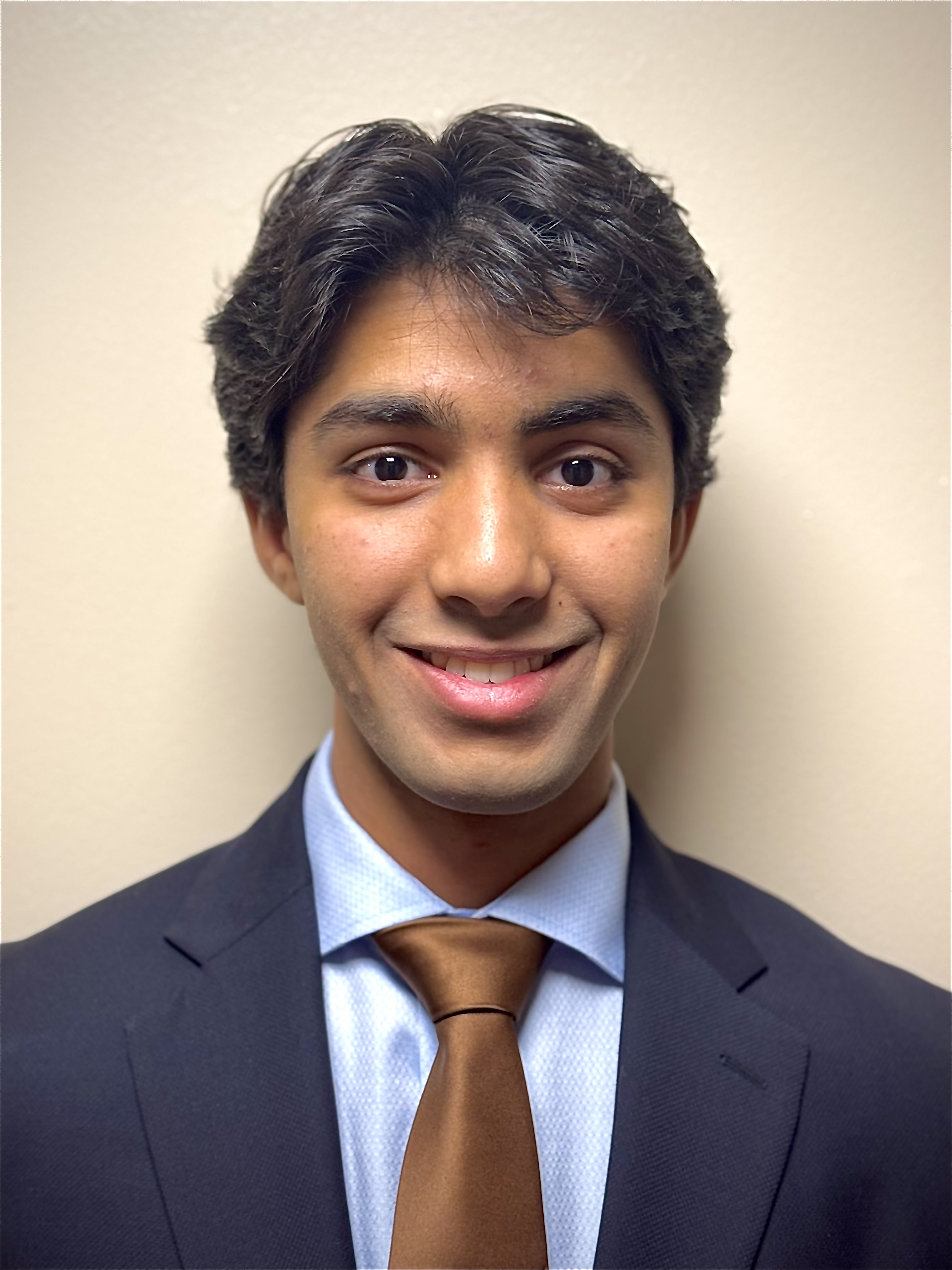
BIO
Emaad Rahmathulla is a freshman in the Honors program at Florida State University. He is studying Cell and Molecular Neuroscience and is interested in learning more about complex physiological processes. Emaad's current research focuses on using LAMMPS to explicitly model von Willebrand Factor (VWF) protein. Due to the lack of research including explicit solvent-particle interactions, the study aims to refine the parameters for simulations so that explicit models are more accurate and precise. In addition to UROP, Emaad volunteers at Tallahassee Memorial Hospital and runs with the Seminole Striders Run Club, recently competing in the Gate River Run.
Dissecting von Willebrand Factor Subdomain Dynamics in Hyperglycemia Using Molecular Simulations
Authors: Emaad Rahmathulla, L. Connor WillisStudent Major: Cell and Molecular Neuroscience
Mentor: L. Connor Willis
Mentor's Department: Department of Biomedical and Chemical Engineering Mentor's College: FAMU/FSU College of Engineering Co-Presenters: Michael Morales
Abstract
Von Willebrand factor (VWF) is a multimeric glycoprotein essential for hemostasis, playing a critical role in platelet adhesion and coagulation. Under normal conditions, VWF unfolds in response to shear forces which allows the A1 and A2 domains to function and begin regulating clot formation via platelet adhesion. Recent research has shown that excess sugar in blood may increase the shear-activation threshold of VWF. This could impair its ability to unfold properly, potentially leading to bleeding disorders in diabetic patients. Our study uses molecular dynamics simulations to investigate the impact of hyperglycemia on VWF subdomain dynamics while also refining the parameters for explicit models. This approach enhances the accuracy of VWF simulations under hyperglycemic conditions and lays the groundwork for implementing a Lattice-Boltzmann Langevin-Dynamics (LB-LD) framework in future studies. Using explicit solvent-particle interactions, we model the structural behavior of the subdomains with glucose in simulations. This allows us to capture the molecular-scale effects of hyperglycemia on VWF flexibility and unfolding. We used two water models for simulations: TIP3P and SPC/Fw. While both accurately replicate physiological conditions, they emphasize different molecular interactions. Water models were validated at 293K, 298K, and 310K by analyzing variables such as density and viscosity. VWF protein and glucose were then implemented into the system using the TIP3P and SPC/Fw models, respectively. Data from these simulations were analyzed and visualized using Visual Molecular Dynamics (VMD) which were then validated with other literature.
Keywords: VWF, Molecular Dynamics Simulations, Hyperglycemia
25th annual Undergraduate Research Symposium, April 1, 2025
Martin Mertiri Poster Session 2: 10:45 am - 11:45 am/ Poster #201
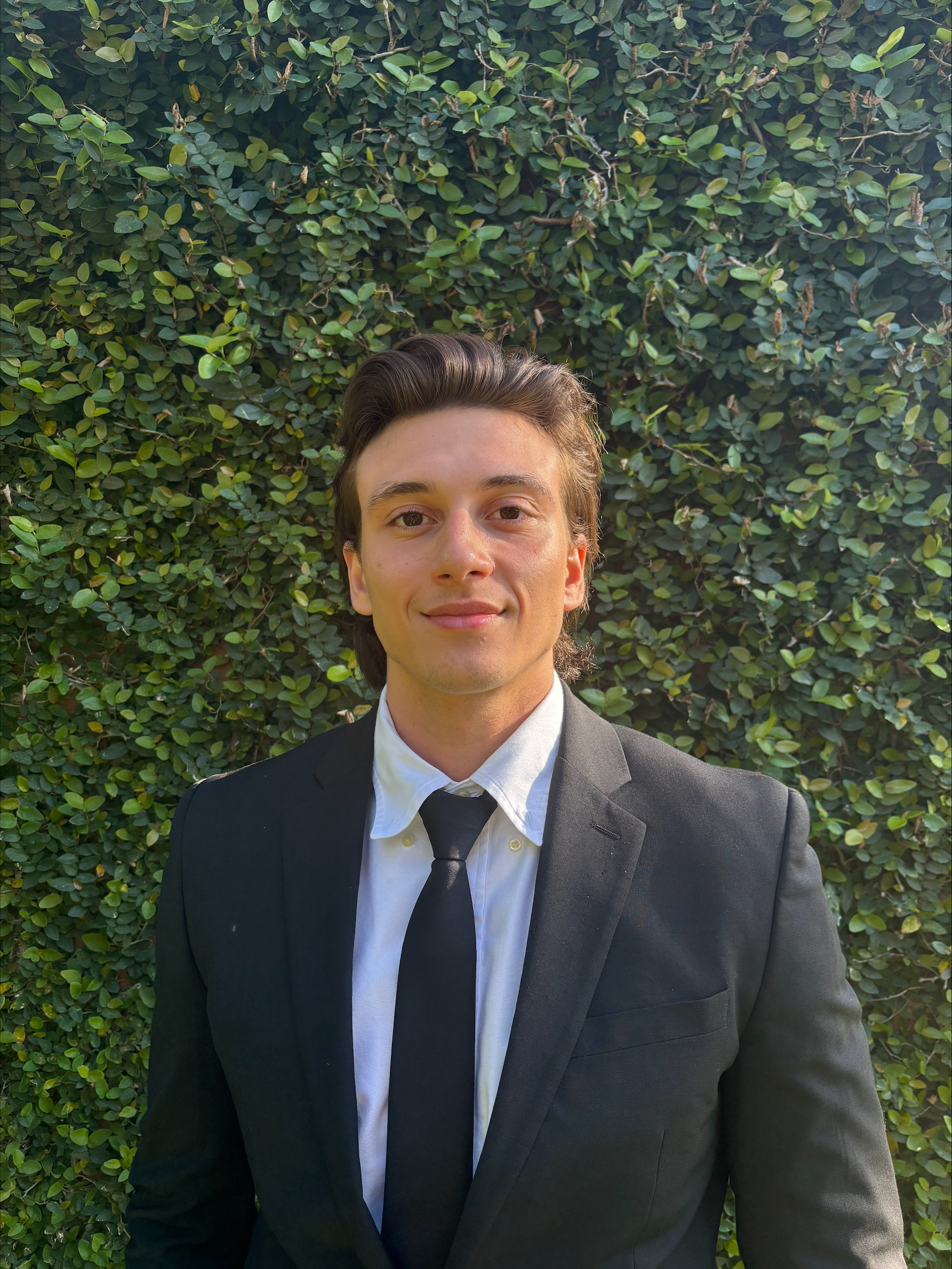
BIO
I am a pre-medical student at Florida State University, with future intentions completing medical school. My hometown is Tampa, and my research interests include medical related subjects such as drug production and understanding of physiological processes.
Dissecting Proteasomes in Microsporidia
Authors: Martin Mertiri, Antonia NemecStudent Major: Biochemistry
Mentor: Antonia Nemec
Mentor's Department: Antonia Nemec Mentor's College: Antonia Nemec Co-Presenters:
Abstract
Microsporidia are spore-forming, obligate intracellular parasites that infect a broad host of organisms including humans. In humans, microsporidia infections range in severity from asymptomatic to fatality, the latter of which is more common in immunocompromised individuals. There are no treatments available for microsporidiosis, but recent evidence has suggested that targeting the proteasome may have therapeutic value. The proteasome is a multi-subunit molecular machine that is responsible for degrading unwanted or unneeded proteins in the cells. Proteasome dysregulation drives many diseases including cancers, autoimmune diseases, and neurological disorders, and there are FDA-approved drugs to treat cancer. Microsporidia has undergone extensive reduction evolution leading to a highly divergent proteasome and are sensitive to treatment with proteasome inhibitors. Here we seek to understand how one subcomplex of the microsporidia differs from the human proteasome in order to develop new treatments for microsporidiosis. Although a continually increasing risk factor amongst individuals with HIV and not only, there is no cure or treatment for microsporidia. Attacking the proteasome in microsporidia, however, seems a promising way to come up with possible treatment or even a cure. Proteasomes are responsible for degradation of waste in the cell, meaning that disruption of such process can lead to increase of cell toxicity, bringing death to the affected cell.
Keywords: Martin Mertiri, Proteasomes, Microsporidia
25th annual Undergraduate Research Symposium, April 1, 2025
Billy Grayling Poster Session 1: 9:30 am - 10:30 am / Poster #196
BIO
I am originally from Chicago and my research interests are in the legal and business field. I have aims to eventually attend graduate school.
The Organization, Economics, and Investigation of the Minutemen Terror Group in the 1960’s: Race, Religion, and Culture.
Authors: Billy Grayling, Micheal McVicarStudent Major: Finance
Mentor: Micheal McVicar
Mentor's Department: Religion Mentor's College: Arts and Sciences Co-Presenters: Alastair Jurs
Abstract
Amid the Red Scare the American populace was terrified by a wave of communism that they believed would steal their way of life. Due to this, there was a wave of hyper nationalism that was fueled by fear, religion, and culture. its these factors together led to the creation of the extremist minutemen militia group in the early 1960’s. This militia was founded by Robert DePugh based upon anti-communist and nativist ideals which they resorted to membership fees to fund their actions but as they scaled up they enacted insurance fraud and extortion rackets. The Minutemen used these funds to stockpile weapons all over the US in the case of a communist attack or if they believed they must take government into their own hands if it was infiltrated by liberal or communist ideals. The group at it’s origin started as a couple of extremists who believed they were fighting the good fight but, through the use of extensive propaganda such as DePugh’s monthly magazine “On Target” their members grew significantly. When weapons and evidence of arms trafficking were discovered, the FBI launched a full-scale investigation that revealed a command and organizational structure far beyond what they could have imagined. All the research on the poster was obtained through archived FBI documents on their investigation of the Minutemen. This project explores the organization, economics, and investigation of the minutemen terror group in the 1950’s and how their creation was influenced by race, religion, and culture.
Keywords: Minutemen, legal, Theological
25th annual Undergraduate Research Symposium, April 1, 2025
Alexa Novo Poster Session 1: 9:30 am - 10:30 am/ Poster #279
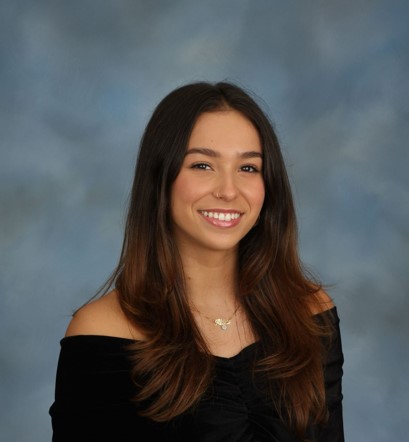
BIO
Hi, my name is Alexa Novo and I am a sophomore from Miami, Florida, majoring in Behavioral Neuroscience on the pre-med track. I'm passionate about medicine and hope to become a trauma surgeon, though my interest in neuroscience has me considering a path in neurosurgery as well. I enjoy researching STEM-related topics, but I also like to venture beyond my major, as it challenges me to explore new perspectives. Outside of school, I love playing volleyball and relaxing at the beach!
Exploring the Great Beyond: The Hunt for Supernovae
Authors: Alexa Novo, Nao SuzukiStudent Major: Behavioral Neuroscience
Mentor: Nao Suzuki
Mentor's Department: Physics Mentor's College: College of Arts and Sciences Co-Presenters: Declan Stitt
Abstract
Cosmology is the field of study that combines physics and astronomy to better understand the universe that surrounds us. Our research focuses on supernovae– cataclysmic stellar explosions that serve as cosmic laboratories for studying fundamental physics, the expansion of the universe, and the formation of heavy elements essential for life. Although supernovae help measure cosmic distances and reveal extreme space conditions, they are difficult to detect, making their study both important and challenging. To detect them, we utilize the James Webb Space Telescope (JWST), the Hubble Space Telescope, and the European Satellite Euclid to capture high-resolution images of our galaxy. These images are processed using SAOImage, a software tool that allows us to mark and identify potential supernovae by comparing new observations to old data, ensuring novel discoveries. To improve accuracy, those with coding experience write codes into a different system to account for previously identified supernovae. Our goal is to train AI to predict where and when supernovae might appear, which could also lead to the discovery of other celestial objects. With continuous data collection, we anticipate identifying 50-100 new supernovae, advancing our understanding of stellar evolution and cosmic phenomena.
Keywords: cosmology, supernova, astrophysics, space
25th annual Undergraduate Research Symposium, April 1, 2025
Audrey Lavender Poster Session 4: 3:00 pm - 4:00 pm/ Poster #22

BIO
My name is Audrey Lavender and I'm originally from Clermont, FL. I'm a senior at Florida State University pursuing a dual major in Psychology and Social Work with a minor in Criminology. I aspire to be a clinical psychologist and I am mainly interested in severe mental health disorders such as Bipolar Disorder and Schizophrenia. However, I also have interest in other areas of psychological science as I have assisted and conducted research in a developmental-cognitive psychology lab. After graduation, I plan to pursue a Master of Social Work while working full-time in a research lab and then complete a Clinical Psychology PhD program.
Factors in Letter Naming Speed
Authors: Audrey Lavender, Dr. Chris SchatschneiderStudent Major: Psychology & Social Work
Mentor: Dr. Chris Schatschneider
Mentor's Department: Department of Psychology Mentor's College: College of Arts & Sciences Co-Presenters: N/A
Abstract
It is known that letter naming speed in isolated naming tasks is a significant predictor of reading ability. However, not much is known about what specifically drives the relationship between the two. This study investigated if psycholinguistic factors such as voicing, Place of Articulation (POA), Manner of Articulation (MOA), vowel categorizations (tongue height, tongue advancement, and lip rounding), letter-sound correspondence, first sound in the letter name (consonant or vowel), and initials of participants first as well as, last names to see if they served as predictors in reaction time to letters on isolated naming tasks. Analysis revealed presence of target letters in initials of either first or last was statistically significant. Findings from this study contribute to the understanding of the relationship between isolated letter naming and reading performance while larger implications point to the consideration of these factors in research involving isolated letter naming speed.
Keywords: Isolated letter-naming, Psycholinguistic, Initial Phoneme, Rapid Automized Naming, RAN
25th annual Undergraduate Research Symposium, April 1, 2025
Ariana Martinez Poster Session 2: 10:45 am - 11:45 am/ Poster #22
BIO
Hi, my name is Ariana Martinez, and I am a Senior majoring in Psychology and Human Development & Family Sciences at FSU. I currently serve as the Curriculum Chair for Sisters2Service, a community service and mentoring organization. I also volunteer in Dr. Haughbrook's Context Lab within the Psychology Department, where we explore genetic and environmental influences on mental health and academic achievement, with a focus on racial disparities. My research interests center on the impact of childhood trauma and poverty on children’s academic performance and socioemotional development, as well as the factors that mediate these relationships. After graduating this year, I plan to pursue a Master’s in Licensed Mental Health Counseling or a Ph.D. in Developmental Psychology.
Screens, Stress, and Sanity: A Modern Parenting Challenge
Authors: Ariana Martinez , Stephanie EsteraStudent Major: Psychology, Human Services & Family Service
Mentor: Stephanie Estera
Mentor's Department: Developmental Psychology Mentor's College: College of Arts & Sciences Co-Presenters: Amaya Robinson
Abstract
Parental stress can shape parenting behaviors and engagement with children. Heightened parenting stress is associated with increased reliance on negative parenting practices, such as harsh discipline and emotional withdrawal, which can contribute to less parental engagement and, potentially, increased child screen exposure. Research suggests that excessive screen time in youth is linked to developmental concerns, including reduced physical activity, impaired cognitive outcomes, and lower academic performance. The purpose of this study is to explore the association between parenting stress and child screen time engagement. This study will examine this relationship using data from the Panel Study of Income Dynamics (PSID), the longest ongoing longitudinal dataset in the U.S., which has tracked 9,200 families and 84,000 individuals as of 2021. The PSID focuses on diverse low-income families, observing poverty-related issues and updating family data annually. For this research, we will use the 2014 Child Development Supplement (CDS), which follows children aged 0-17 born after 1997. The CDS includes data on parenting stress and screen time engagement at two time points. We will examine the association between parenting stress and screen time usage at Time 1 and assess whether parental stress at Time 1 predicts increased screen use at Time 2, controlling for parental income and educational attainment. Findings from this study will provide insight into how parenting stress influences children’s digital media habits. If significant associations are found, results may inform interventions aimed at reducing parental stress to promote healthier screen time behaviors and improved developmental outcomes for children.
Keywords: Parental Stress, Children's Screen Time, Income, Education
25th annual Undergraduate Research Symposium, April 1, 2025
Zoe Silva Poster Session 2: 10:45 am - 11:45 am/ Poster #19
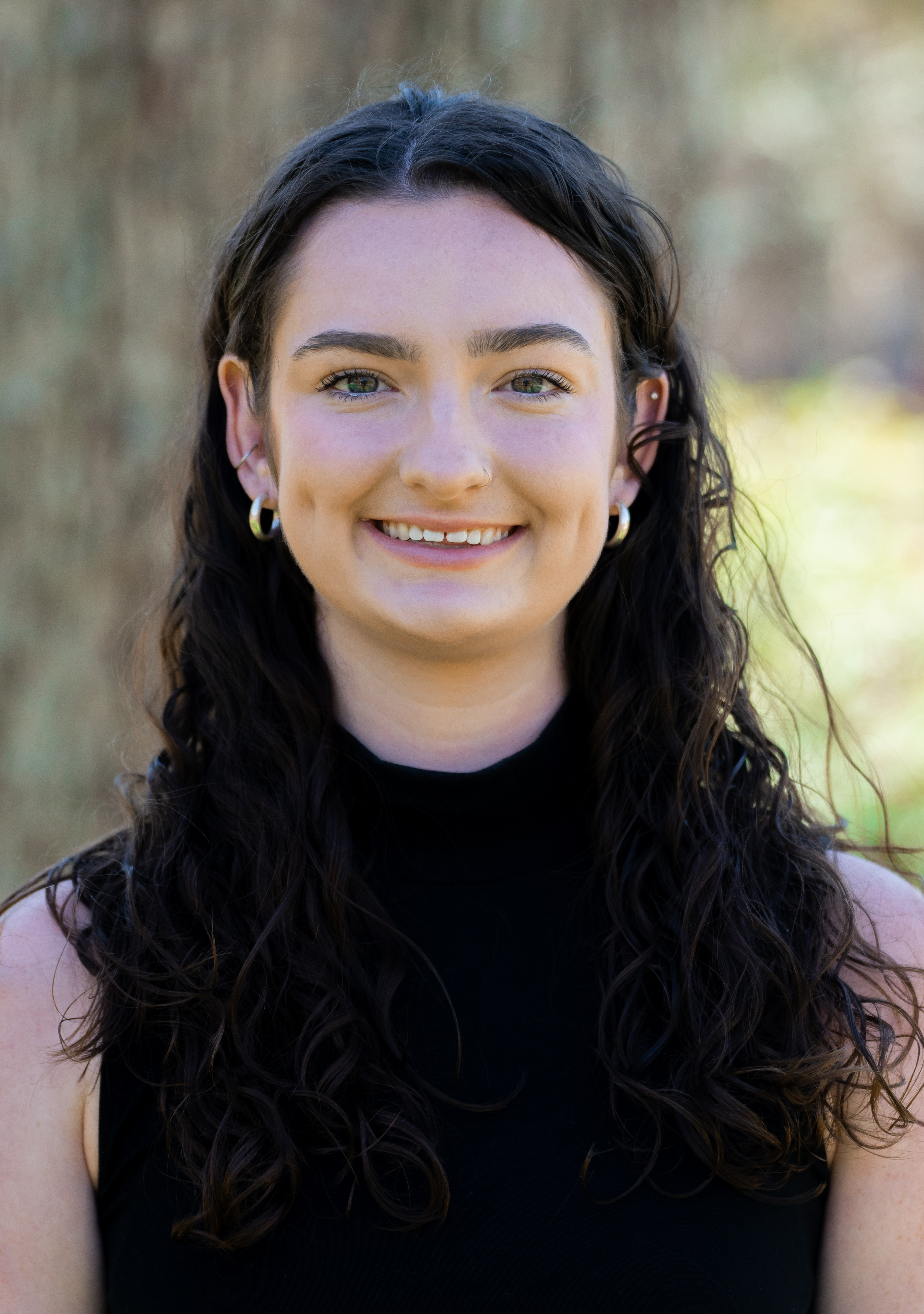
BIO
I am a second year dietetics student from the Greater Philadelphia Area. My passion for dietetics stems from an interest in understanding how nutrition can be optimized for better health and fitness, as well as the concept of nutrition and food as medicine. This passion has led me to engage in research at FSU where I have been able to work in a nutrition lab focusing on cardiovascular health. After graduating from FSU I intend to pursue continued education with the end goal of becoming a registered dietitian.
Comparing Effects of Sauna Use and Exercise on Cardiovascular Health
Authors: Zoe Silva, Andrea LobeneStudent Major: Dietetics
Mentor: Andrea Lobene
Mentor's Department: Department of Health, Nutrition, and Food Sciences Mentor's College: College of Education, Health, and Human Science Co-Presenters:
Abstract
Excess sodium is widely regarded as being detrimental to cardiovascular health, due to its impact in contributing to risk factors for cardiovascular disease. Despite this, most people exceed sodium intake guidelines, due to the difficulty in reducing sodium intake; finding ways to offset the harmful effects of excess sodium is necessary. One well researched method to do this is exercise, however sodium loss via sweat has not been examined as a possible mechanism. Additionally, there has been little research into whether passively sweating, such as in a sauna, offers similar benefits. Evidence indicates that saunas can acutely improve endothelial function and blood pressure, though it is unclear whether this is due to sweating. This study intends to fill the gap in knowledge surrounding the effects of sweat on cardiovascular health in people who consume a high sodium diet. We hypothesize that regular sauna usage provides similar effects as exercise in improving endothelial function, due to sodium loss via sweating. Participants in this study will complete three interventions for two weeks each. Each intervention will use a high sodium diet, with one intervention having an exercise component, another a sauna component, and the last one without a sweating component. Blood pressure and flow-mediated dilation measurements will be taken at the beginning and end of each intervention to assess changes in cardiovascular health; sweat patches will be used to determine sweat sodium concentration. Should our hypothesis prove correct, this would provide another beneficial option in the prevention and mitigation of cardiovascular disease.
Keywords: Nutrition, Health Sciences, Exercise
25th annual Undergraduate Research Symposium, April 1, 2025
Hafsa Baysal Poster Session 4: 3:00 pm - 4:00 pm/ Poster #82
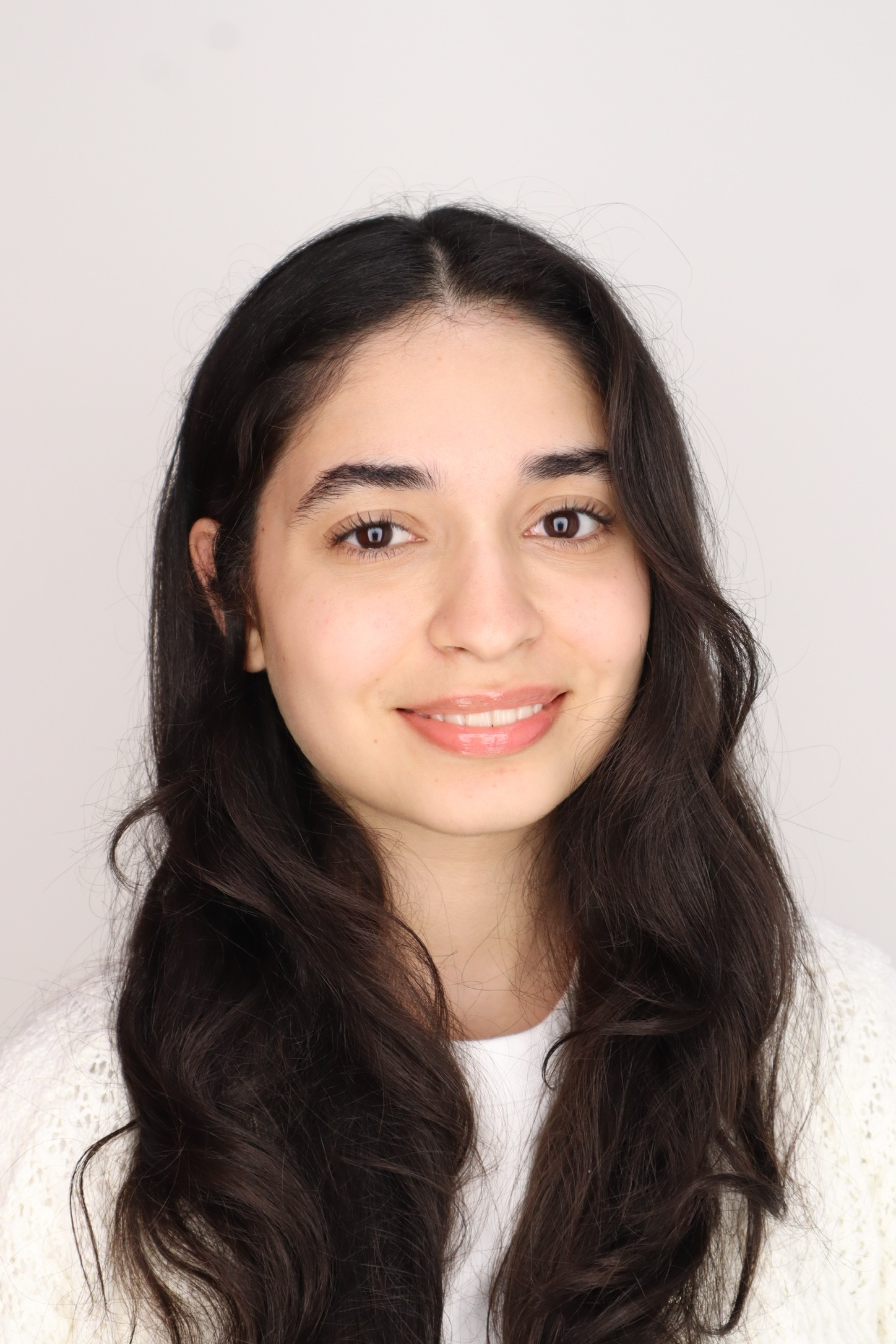
BIO
Hi! My name is Hafsa and I'm from South Florida. I'm a Cell and Molecular Neuroscience major and I intend to minor in mathematics and physics.
Analyzing Neural Mechanisms of Spatial Navigation
Authors: Hafsa Baysal, Aaron WilberStudent Major: Cell and Molecular Neuroscience
Mentor: Aaron Wilber
Mentor's Department: Psychology and Neuroscience Mentor's College: College of Arts and Sciences Co-Presenters:
Abstract
Spatial navigation allows living organisms to perceive their relative locations within an environment, enabling necessary and effective navigation through their surroundings. This process relies on egocentric encoding, a self-centered point of view, and allocentric encoding, which are based on spatial cues, and the transformation in between. The hippocampus and parietal cortex (PC) comprise a network for coordinating these reference frames, though the mechanism remains unclear. We investigate these mechanisms by using the complex sequence task with rats. Neuronal activity is recorded extracellularly during behavior sessions while multi-unit activity (MUA) and different types of single unit activity will be analyzed for their roles in those reference frames. The results of this study are important to understand how the brain coordinates and integrates different spatial reference frames, shading lights on spatial cognition, memory disorders, and abstract representation formation from allocentric and egocentric views.
Keywords: Neuroscience, Spatial Navigation, spatial coordination
25th annual Undergraduate Research Symposium, April 1, 2025
Narda Garcia Poster Session 3: 1:45 pm - 2:45 pm/ Poster #214

BIO
I am a sophomore majoring in cellular and molecular neuroscience. I'm from Miami and plan to attend medical school after graduation. My goal is to become a well-rounded physician with a strong background in research.
Cardiofacioneurodevelopmental Syndrome: An Analysis Of Its Genotypic And Phenotypic Characteristics And The Role Of CCDC32
Authors: Narda Garcia, Dr. Qian YinStudent Major: Cell and Molecular Neuroscience
Mentor: Dr. Qian Yin
Mentor's Department: Biological Science Mentor's College: College of Arts and Sciences Co-Presenters:
Abstract
Cardiofacioneurodevelopmental syndrome (CFNDS) is a rare genetic disorder linked to homozygous recessive mutations in CCDC32, a chaperone protein essential for the AP2 complex assembly. Impairment of the AP2 adaptor complex disrupts critical processes for cellular function. However, the clear relationship between CCDC32 mutations and the diverse phenotypic manifestations of CFNDS remains unclear. This research aims to compile reported phenotypic and genotypic characteristics of CFNDS while summarizing the role of CCDC32 in its physical manifestations to improve accessibility to available information and distinguish recurring patterns. A targeted literature review was conducted to gather phenotypic characteristics, genetic patterns, and the connection between CFNDS and CCDC32 by examining peer-reviewed medical reports and research articles. Data from all reported cases were gathered and organized into phenotypic and genotypic tables for better comprehension. The most common clinical features noted in individuals with CFNDS were craniofacial abnormalities, cardiac defects, and neurodevelopmental delays, often related to the frameshift mutation observed in three out of the five cases. Additionally, multiple studies have linked CFNDS manifestations to CCDC32 impairments, which compromise AP2 complex assembly and lead to disruptions in clathrin-mediated endocytosis and cilia formation. These disruptions affect multiple cellular mechanisms and body systems, explaining the various phenotypic expressions of CFNDS. These findings highlight the critical role of CCDC32 in cellular activities and its clear association to CFNDS’s phenotypic characteristics. Further research should focus on investigating the relationship between CCDC32 and different AP complexes to determine whether impairments in their assembly have a role in further CFNDS manifestations.
Keywords: Cardiofacioneurodevelopmental syndrome, CFNDS, CCDC32
25th annual Undergraduate Research Symposium, April 1, 2025
Sarah Downing Poster Session 4: 3:00 pm - 4:00 pm/ Poster #260
BIO
Hi! My name is Sarah Downing, and I’m a Dance major on a Pre-Physician Assistant (PA) track at Florida State University. I’m originally from Panama City Beach, Florida, and I’ve always been passionate about both movement and medicine. My goal is to merge my background in dance with healthcare, using my understanding of the body to help others live healthier lives.
Throughout my time at FSU, I’ve worked as a research assistant for a Master of Fine Arts dance piece, performed in the Spring 2024 MFA Showcase, and assisted with productions like Days of Dance. Beyond dance, I’ve gained hands-on experience in healthcare by volunteering in the Post-Operative Unit at Tallahassee Memorial Hospital and interning at First Choice Physical Therapy—experiences that have deepened my passion for patient care and rehabilitation.
These experiences have also fueled my curiosity for scientific research. I’m drawn to exploring a variety of topics in the science realm, and research has allowed me to discover even more possibilities for my future. Over the past year, I’ve had the privilege of working in the biology department with Dr. Bass on a project that truly fascinates me. I’m excited to continue this research and see where it leads!
Mutants in the Metaverse
Authors: Sarah Downing, Hank BassStudent Major: Dance; Pre-PA track
Mentor: Hank Bass
Mentor's Department: Biological Sciences Mentor's College: Biology Co-Presenters: Sohaila Askar
Abstract
The Maize-10-Maze project is a public education outreach event at FSU in Tallahassee, FL, as part of
our outreach educational project for more than 20 years. The goal of the outreach is to produce a fun
and educational self-guided public field tour of the maize genome. The goal of this project is to produce
a virtual version of the Maize-10 maze for distribution online. We started by exploring different online
platforms that would be compatible with posting images and movies from past events. We selected 3
platforms to enhance visibility and for user-guided exploration, such as Instagram (@maize10maze)
and GlideApp. Our criteria for platforms were based on user accessibility, cost, and ease of
administration. The online resources (images, placards, links to more info) are intended for free use in
any educational setting from middle school through college level. The final product, which we call the
maize10maize online museum, is fascinating and beautiful on its own, while also illustrating the historic
importance of maize mutants for advancing plant biology research.
Keywords: genetics, mutants, corn maze
25th annual Undergraduate Research Symposium, April 1, 2025
Tatiana Giraldo Poster Session 1: 9:30 am - 10:30 am / Poster #96

BIO
Hello! I’m Tatiana Giraldo from Orlando, Florida. I am interested in crime analysis, victim advocacy, intelligence gathering, and overall data analysis. My dream career is to be a crime analyst for FDLE. I’m passionate about criminology research and the possible policy implications of that research.
A Mixed-Methods Evaluation of the Impacts and Implementation of Florida’s Risk Protection Order (RPO) Law
Authors: Tatiana Giraldo, Emma FridelStudent Major: Criminology and Criminal Justice
Mentor: Emma Fridel
Mentor's Department: Criminology Mentor's College: College of Criminology and Criminal Justice Co-Presenters: Andronika Christian, Nashley Gabriel Cardenas, Francisca Puiatti, Olivia Jaillet
Abstract
The goal of this project is to explore the efficacy and implementation of Risk Protection Orders (RPOs) in Florida. RPOs were introduced in the Florida Legislature in 2018 and since their inception very few studies have been conducted on them. It is important that we investigate the implementation of RPOs on a larger scale to determine whether they are an efficient mechanism to reduce gun violence. The three stages to this analysis are: collecting the data from over 15,000 RPO cases from Florida to create a database, running four levels of quantitative analysis to evaluate the effect of RPOs on reducing gun violence and using mixed methods to explore the differences in RPO implementation across jurisdictions. Although the project is in its first stages, it promises to strengthen and broaden the knowledge on RPOs and their relation to gun violence exponentially. The database created will be the largest and most representative sample of RPOs and will allow for the most comprehensive evaluation of a state’s RPO laws. The findings generated by the analyses will reveal important trends of the implementation and efficiency of RPOs in preventing gun violence, an ongoing issue that has affected millions of lives. Researching the efficacy of the legislation that is created to reduce gun violence will allow future legislators to create new and better solutions.
Keywords: RPO laws, criminology, firearms
25th annual Undergraduate Research Symposium, April 1, 2025
Aayushi Ranjan Poster Session 2: 10:45 am - 11:45 am/ Poster #51

BIO
Hi! My name is Aayushi Ranjan, and I am a first-year Interdisciplinary Medical Sciences student, specifically Pre-Health Management, Policy, & Information, and I am involved in undergraduate research focusing on Alzheimer's Research. I participate in research through the Wilber Lab in the Psychology Department. Originally from Boca Raton, I love going to the beach and regularly participate in beach cleanups. Outside of academics, I enjoy exploring different cultures, learning new languages, and engaging in community outreach.
Evaluating Cognitive Deficits in 3xTg-AD Mice Using a Linear Reorientation Task
Authors: Aayushi Ranjan, Isabel CoidurasStudent Major: Health Management, Policy & Information
Mentor: Isabel Coiduras
Mentor's Department: Psychology Mentor's College: College of Arts and Sciences Co-Presenters: Rebecca Branson
Abstract
Alzheimer’s disease (AD) is a progressive neurodegenerative disorder characterized by cognitive decline, including impairments in spatial orientation. We observed impaired spatial orientation in genetically engineered 6-month-old 3xTg-AD mice on a hybrid (129x1/C57BL6) background. However, we required mice on a pure C57BL/6 background due to their more robust circadian rhythms. This study investigates cognitive deficits using a linear orientation task to assess spatial learning and memory. 3xTg-AD and C57BL/6 (wild-type) control mice were trained to navigate a linear track to an unmarked location. First, mice alternated back and forth on the track for a water reward in an enclosed start box. Then, they learned to stop in an unmarked reward zone during the outbound trajectory. Live tracking software automatically delivered a brain stimulation reward when mice stopped for a sufficient period. The track’s start position changed each trial, requiring mice to use distal cues for reorientation. We hypothesized that 6-month-old female 3xTg-AD C57BL/6 mice would show impaired task performance, indicating spatial reorientation deficits. Histological analysis confirmed medial forebrain bundle placement and assessed AD pathology. Immunohistochemical staining revealed amyloid-beta plaques and tau pathology in AD mice. Once sufficient data is collected, we will correlate pathology levels with behavioral impairments, expecting pathology density in the dorsal subiculum to correlate with task performance. These findings contribute to evidence supporting the use of spatial navigation tasks as a robust measure of cognitive decline in AD models, offering insights into potential therapeutic targets for early intervention.
Keywords: Alzheimer's, Cognitive Decline, Sleep
25th annual Undergraduate Research Symposium, April 1, 2025
Andrew Fredericks Poster Session 3: 1:45 pm - 2:45 pm/ Poster #10
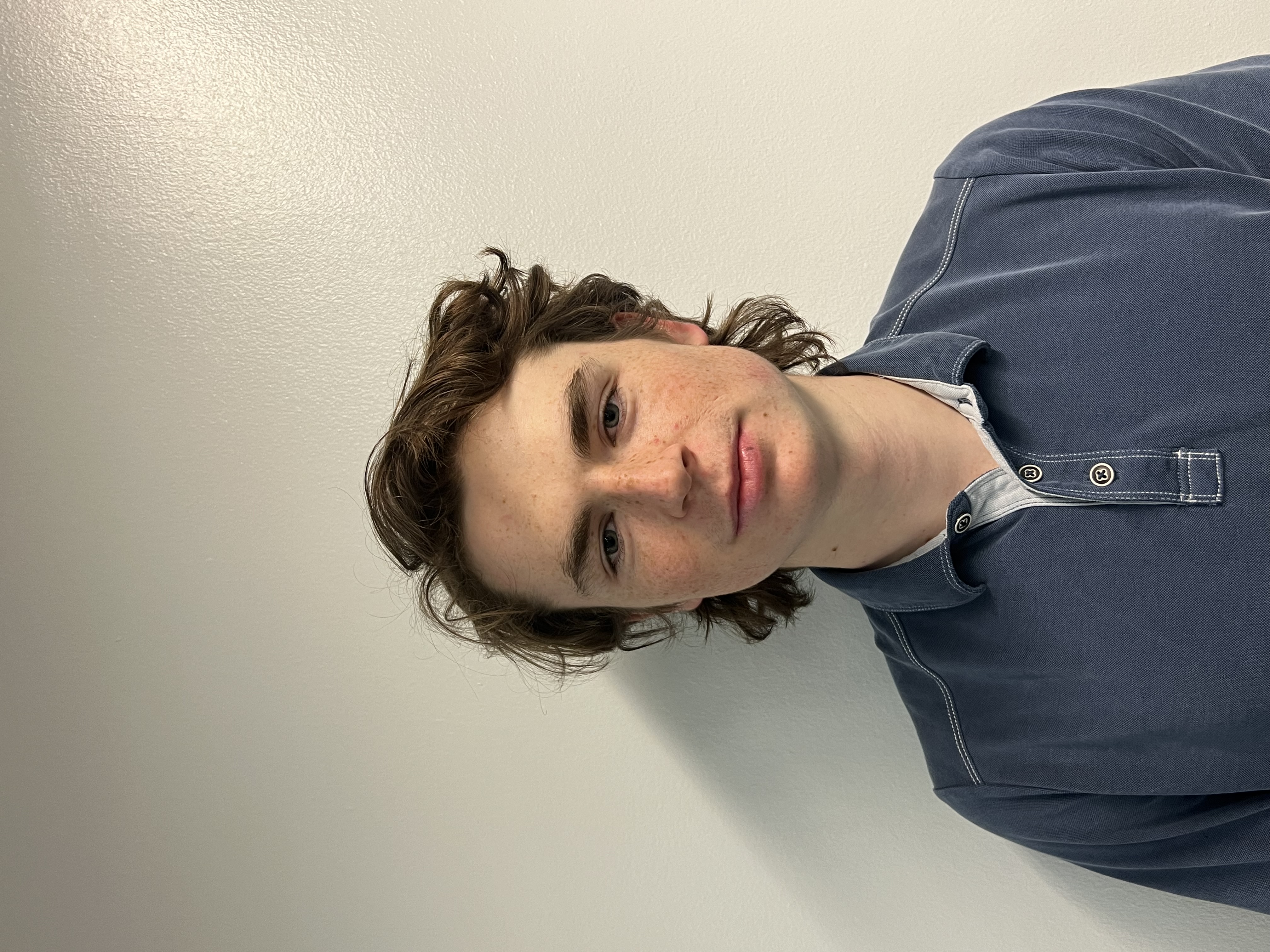
BIO
My name is Andrew Fredericks, and I am a second-year undergraduate from Tampa, Florida. I am majoring in biochemistry with the intention of going to graduate school. I am interested in chemistry and the cellular mechanisms underlying behavior and memory. My current research project explores the intersection of sleep and memory utilizing behavioral training in rats and optogenetic methods. Aside from my roles in the lab, I serve on the board for Relay for Life at Florida State and am always looking for opportunities to engage with the campus community, expand my research experience, and grow as a student.
Studying the Impact of Light-Manipulated Spindle Rhythms on Spatial Memory
Authors: Andrew Fredericks, Carmen VarelaStudent Major: Biochemistry
Mentor: Carmen Varela
Mentor's Department: Psychology Mentor's College: Arts and Sciences Co-Presenters:
Abstract
The hippocampus forms episodic memories for the first time and allows mammals to integrate them with prior memories during sleep. The thalamus facilitates this process through its interconnections with the neocortex and the generation of spindle oscillations. Using optogenetic methods, we were able to manipulate spindle oscillations and study the effects on spatial memory. Specifically, this study utilized behavioral training, testing, and analysis to determine how different spindle oscillations influenced spatial memory. This was performed by implanting a fiber optic into a rat's thalamus, which was coated in a vector containing a gene making neural cells light-sensitive. Through the fiber optic, light was delivered as rhythmic, non-rhythmic, and non-dynamic stimulation. Stimulation was only delivered during periods of sleep between different tasks. Results indicated that rhythmic conditions appeared to yield modest positive discrimination index values, suggesting a potential facilitative effect on performance. Furthermore, non-dynamic and non-rhythmic stimulation conditions predominantly displayed negative or near-zero discrimination index values, indicating minimal or negative effects on spatial memory. The future of this research aims to contribute to developing therapeutic strategies for enhancing memory and treating memory-related disorders.
Keywords: Psychology, Memory, Neuroscience, Optogenetics, Thalamus
25th annual Undergraduate Research Symposium, April 1, 2025
Soraya Bartley Poster Session 4: 3:00 pm - 4:00 pm/ Poster #230
BIO
Greetings, I am Soraya Bartley, a first-generation college student from Broward County, South Florida. As a second-year student majoring in Sociology on the Pre-Med track with a minor in Child Development, I am deeply passionate about addressing healthcare disparities among marginalized communities. My goal is to attend medical school and become a Pediatrician, ensuring equitable healthcare access for all children.
Through the Undergraduate Research and Academic Engagement program, I have the opportunity to explore the unique challenges faced by students in recovery at Florida State University. My research focuses on identifying the needs and barriers they encounter, allowing me to contribute to solutions that support their academic success, well-being, and long-term recovery. By examining these disparities, I aim to bridge the gap between healthcare and education, advocating for comprehensive support systems.
Investigating Service Needs and Barriers within a Collegiate Recovery Program
Authors: Soraya Bartley, Mr. Nicholas ReeseStudent Major: Sociology with Child Development Minor
Mentor: Mr. Nicholas Reese
Mentor's Department: The Center for Health Advocacy and Wellness Mentor's College: College of Medicine Co-Presenters: Ollie Saunders, Olivia Fountain-Zimmerman
Abstract
College students experience higher rates of substance use disorders (SUDs) compared to the average population, attributable to factors such as the perception of colleges being an “abstinence-hostile” environment and low treatment rates. This population’s unique needs have
contributed to increasing interest in Collegiate Recovery Programs (CRPs) to address the needs of college students with SUDs, and research has found that these programs are effective. Research about CRPs has historically focused on demographic data of participants, so research about the necessary characteristics, services, and barriers that may predict CRP effectiveness is still emerging and necessary to create a more effective, standardized model of support.This research aims to investigate and evaluate the service needs and barriers to access within
Florida State University’s collegiate recovery program using interviews with CRP participants. Researchers conducted semi-structured interviews of students who identified as in recovery and who have participated in the CRP. Researchers utilized data coding to identify common themes regarding the service needs and barriers experienced by participants within the program.Thematic coding revealed that the most frequently cited service needs included diverse resources within the CRP and social connections/peer support within the program. Students also identified
clearly defined expectations and self-advocacy mechanisms as needs. Students frequently identified campus-wide recruitment difficulties as a barrier. Students also referenced the lack of sober housing and limited program availability for commuters, off-campus students, graduated
students, and students on break as barriers. These results revealed the most prevalent service needs and barriers to access for participants in a campus CRP.
Keywords: Recovery, Substance use, Addiction, Qualitative
25th annual Undergraduate Research Symposium, April 1, 2025
Maili Odom Poster Session 4: 3:00 pm - 4:00 pm/ Poster #153
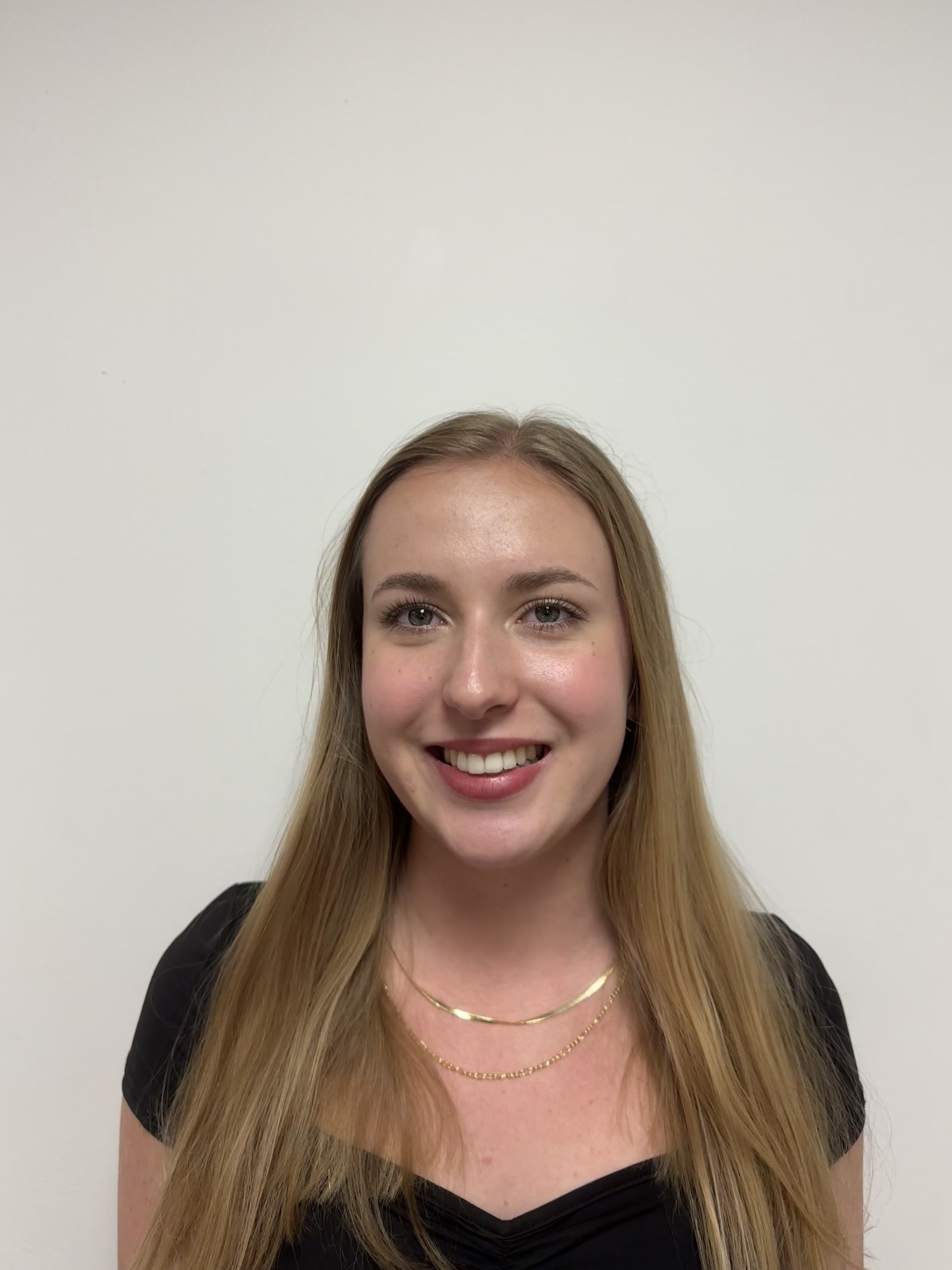
BIO
Hi, my name is Maili Odom. I am Biology major, and a Criminology minor on a Pre-med track. Conducting research has been a very fun and fulfilling experience for me. I am super interested in the field of psychology, memory, and any to take part in experiences to help me grow personally and in my future profession as a Physician. I have loved gaining knowledge and hands-on experience in the setup and conduction of an experiment.
Developing an Experimental Test to Determine Cognitive Flexibility in Rats in a Reward Motivated Task
Authors: Maili Odom, Carmen VarelaStudent Major: Biological Science
Mentor: Carmen Varela
Mentor's Department: Psychology Mentor's College: Psychology Co-Presenters:
Abstract
The principle of this experiment was to form a new method and experimental test to study cognitive flexibility, memory, and recognition in rats for a reward motivated task. This can be used as a pathway for further analysis and data on memory and cognition in the brain. With this being a new experiment, there was much trial-and-error involved through the setup and execution.
The experiment was started through designing and implementing a microcontroller system. This was done using an Arduino software, which was coded and placed to control the switches, feeders, and LEDs in the experimental arena. LEDs were used to indicate a certain area in the arena corresponding to specific corners where stepper motors were placed to give reward in the form of a sugar pellet to the rat. Everything was soldered, coded, and designed to be controlled by switches and buttons. Once this initial set up was complete the testing could be conducted.
Through group testing on two pilot rats, the cognitive shaping, training, flexibility, and training tasks were performed on the rats. Once this was complete, it is hypothesized that through this task the rats were able to complete and learn the correct corners associated with reward, so they are capable of cognitive flexibility for a reward motivated task.
Keywords: Behavior, Cognitive Flexibility, Rats,
25th annual Undergraduate Research Symposium, April 1, 2025
Anne Bristol Poster Session 2: 10:45 am - 11:45 am/ Poster #25

BIO
Anne Bristol is a third-year Political Science major and Innovation minor at Florida State University (FSU). Originally from West Palm Beach, Florida, Anne has a strong passion for research, advocacy, and understanding the intersection of law, politics, and public opinion.
As a UROP (Undergraduate Research Opportunity Program) student, she is working under the mentorship of Martín Gandur to explore how factors such as education, socio-economic status, ideology, and prior legal experiences influence support for judicial institutions, particularly in Argentina’s Supreme Court and other Latin American contexts. Through mixed-methods research, including survey analysis, interviews, and case studies, Anne seeks to contribute to a more nuanced understanding of judicial trust and its implications for democratic stability.
Beyond research, Anne is actively involved in the Student Alumni Association (SAA) as a Communications Ambassador, as well as serving as a THRIVE25 Peer Leader, where she helps transfer students integrate into the FSU community.
Looking ahead, Anne hopes to further her studies in law, policy analysis, or international affairs, leveraging her research experience to influence legal and political reforms. Her long-term goal is to work on initiatives that promote judicial transparency, civic engagement, and equity in governance, ensuring that legal systems serve all citizens fairly.
Public Perception of Latin America's Judiciaries
Authors: Anne Bristol, Martin GandurStudent Major: Political Science
Mentor: Martin Gandur
Mentor's Department: Political Science Mentor's College: College or Social Science and Public Policy Co-Presenters:
Abstract
What factors impact Latin American citizen’s opinions of the legitimacy
of their respective high courts? Tracking citizen’s perceived legitimacy
of their respective high courts opens a pathway to more insight on
patterns in civil interactions with the judicial system and knowledge of
civil rights and civil responsibilities. Understanding citizen’s
relationship with their respective judicial systems helps foment and
strengthen Latin American democracies. Our data collection consisted
on reviewing LAPOP AmericasBarometer and in the next step of this
research we will empirically test our hypotheses.
Keywords: judicial, Latin America, salient, public perception
25th annual Undergraduate Research Symposium, April 1, 2025
Gemini Williamson Poster Session 2: 10:45 am - 11:45 am/ Poster #106
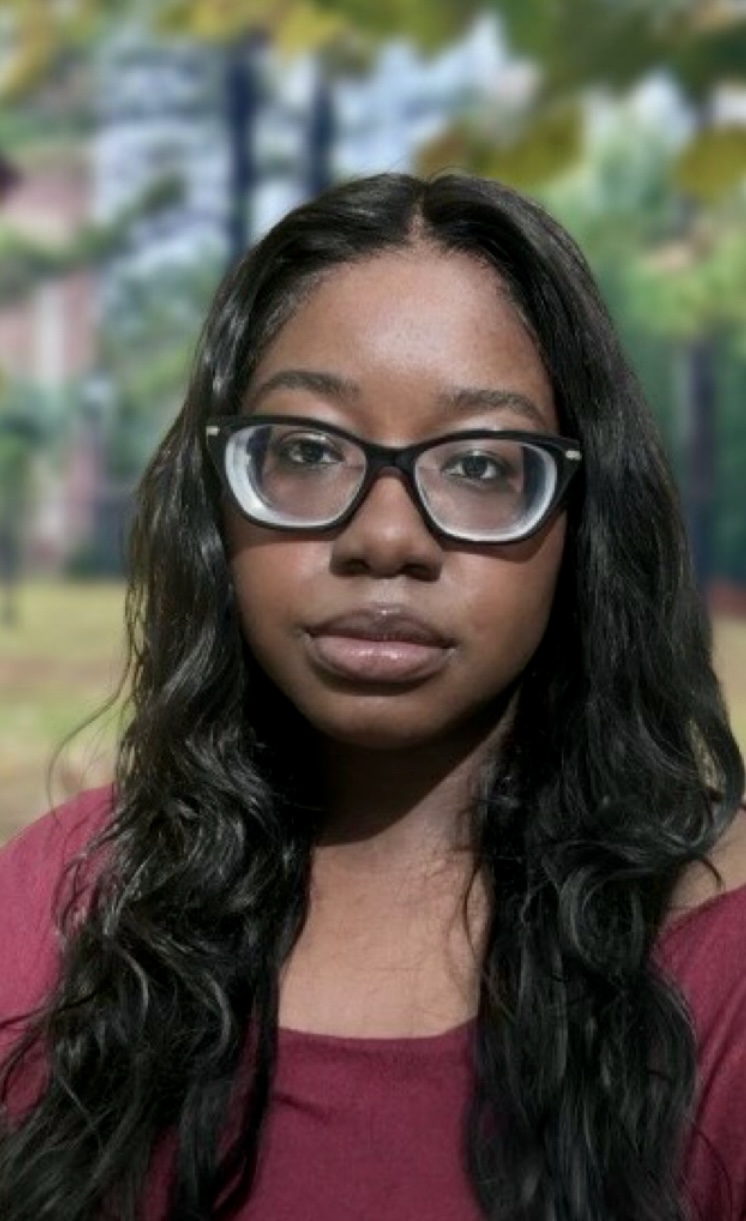
BIO
Born and raised in West Palm Beach, Florida, I am a first-generation college student using my love for nutrition and children's health to become a Pediatric Dietitian. I pride myself on my educational integrity and drive as I continue my undergraduate studies. When I am not focusing on excelling academically, I turn to my community to find ways to grow it and myself. I also enjoy personal hobbies such as Yoga, writing, and childcare. These factors encourage me to continue to push through adversity, accomplish my goals, and help people the way I aspire to every day.
Discovering SoulClap: An Intergenerational Auto-Ethnographic Discussion on Black Joy, Health, and Wellness
Authors: Gemini Williamson, Dr. Chris OmniStudent Major: Dietetics
Mentor: Dr. Chris Omni
Mentor's Department: Geography Mentor's College: College of Arts and Sciences Co-Presenters: Eryn Files
Abstract
The OMNI Institute prioritizes Black Joy as a non-medical factor of public health, countering trauma-based narratives typically associated within the community. This research project extends our investigation into Black women’s health through our work on the OMNI Institute’s latest project, “SoulClap Cafe: A Black Joy Journal.” Contributing to the release of the inaugural edition’s theme, “Black Joy and Nature,” we participated in the interviews of two Black women from Bristol, U.K. with Dr. Omni and intergenerational researcher Michelle Gunn in three segments, themed “Joy,” “Nature and Spirituality,” and “Growth, Lessons, and Self-Care.” We identified common themes within the interviewees’ experiences through embodied knowing and endarkened narrative inquiry, integrating intuition and sensory awareness into the traditional analytical research process. As a team, we followed Dr. Omni’s Kujima Theory of Collective Self-Motivation, featuring "kujichagulia" (self-determination), "ku’umba" (creativity), and "ujima" (collective work and responsibility). We investigated the broad influence of these themes on Black women’s sense of identity and collective wellness through literature reviews. We identified key theories like Alice Walker's and Dr. Melanie Harris’ eco-womanism. Considering our personal connections to the research as young Black women, we ultimately challenge the modern characterization of the Black woman and argue for the normalization of self-care, agency, religion, and sources of wellness found to intersect with Black women’s experiences in nature.
Keywords: Black Women, Wellness, Public Health
25th annual Undergraduate Research Symposium, April 1, 2025
Javier Fernandez Poster Session 4: 3:00 pm - 4:00 pm/ Poster #200
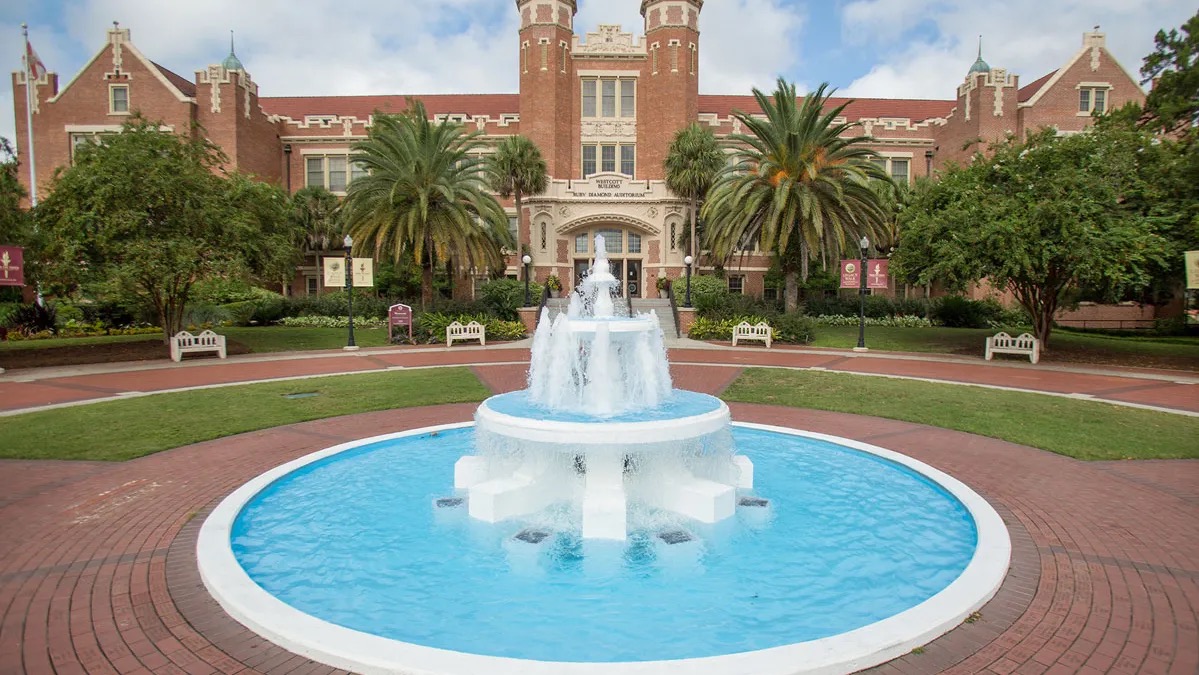
BIO
I'm Javier Fernandez and I am Pre-Media/Communication Studies major from Miami, FL with a diverse set of interests. I am focused on a future in real estate development or broadcasting and I am actively engaged on campus. My commitments include UROP, Presidential Scholars, Seminole Productions, KOMP Sports, the Real Estate Society, and intramural sports.
Honesty & Observability
Authors: Javier Fernandez, Jose LopezStudent Major: Media/Communication Studies
Mentor: Jose Lopez
Mentor's Department: Economics Mentor's College: College of Social Sciences and Public Policy Co-Presenters: Mia Ferris, Jack Engelhard, Noah Brown, Maria Fernandez, Riley Sheehan
Abstract
We introduced an experimental design that allows us to discreetly observe the true message of a fraction of the decisions in a Fischbacher & Follmi-Heusi (2013) style lying game. This project builds on earlier research that compared lying behavior in a setting where 0% of decisions were observed to a setting where 100% of decisions were observed (Gneezy, et al. 2018; Abeler, et al. 2019). Using a consistent design, we studied lying behavior in settings of 0%, 20%, 50%, and 100% observation, respectively. These new partial observability treatments allow us to directly observe individual lie decisions in an environment where subjects have an incentive to lie through the social image channel. With this individual level data, we can more precisely estimate the individual behavior of the unobserved subjects in a setting where subjects have an incentive to disguise their lies. Using these more precise estimates, we can test previously untested predictions of the lying models that consider a social image cost. In addition to these treatments, we used the design to test the detectable/deniable lie paradigm (Tergiman & Villeval 2023) in an individual decision setting. Data collection is planned to begin in March 2025.
Keywords: Money, Honesty, Observability, Economics, Ambiguity
25th annual Undergraduate Research Symposium, April 1, 2025
Julia De Faria Aildasani Poster Session 1: 9:30 am - 10:30 am/ Poster #124

BIO
My name is Julia De Faria Aildasani, and I am a second-year undergraduate student at Florida State University. I am originally from São Paulo, Brazil, and I’m currently on the pre-med track with a strong passion for chemistry, biology, and medicine. My current research focuses on investigating the role of Csm1 in regulating Ulp2 activity and cell cycle progression in Saccharomyces cerevisiae. I am excited to be part of FSU's undergraduate research symposium and to share the findings of our work with a broader academic community.
Investigating the Role of Csm1 in Regulating Ulp2 Activity and Cell Cycle Progression in Saccharomyces cerevisiae
Authors: Julia De Faria Aildasani, Yanchang WangStudent Major: Interdisciplinary Medical Sciences - Clinical Professions
Mentor: Yanchang Wang
Mentor's Department: Medicine Biomedical Sciences Mentor's College: College of Medicine Co-Presenters:
Abstract
In this study we used the organism Saccharomyces cerevisiae, or better known as budding yeast. The protein ulp2 within our model organism can be described as a peptidase that cleaves Smt3/SUMO-1 peptides from proteins, it contributes to chromosome cohesion at centromeric regions, recovery from checkpoint arrest caused by DNA damage or DNA replication defect, and RNA splicing (Engel, 2024). Moreover, it is a potential substrate of Cdc28p and its human homolog, PML, which is associated with promyelocytic leukemia and can partially compensate for the loss of function in yeast mutants (Engel, 2024). Additionally, ulp2 is recruited to the nucleolus by the csm1-binding domain (de Albuquerque, 2018). We know that csm1 is an essential protein for nucleolar activity; therefore, we expect to see lower ulp2 activity and premature mitotic exit in yeast cells with csm1Δ compared to the wild-type. To test this, a csm1Δ ulp2-myc phosphorylation western blot (G1 arrest) will be performed. The cells will be synchronized in the first cell cycle stage using alpha factor, released, then time points will be taken from 0 to 140 minutes. In the experiment, we expect to see a slight increase in ulp2 phosphorylation over the course of the cell cycle as well as premature ulp2 phosphorylation of S. cerevisiae, for Csm1Δ. This research is significant because it builds upon the foundational knowledge of biochemical pathways relevant to human disease such as chromosome nondisjunction and cancer.
Keywords: Biology, Cell Cycle Progression, Ulp2 activity


